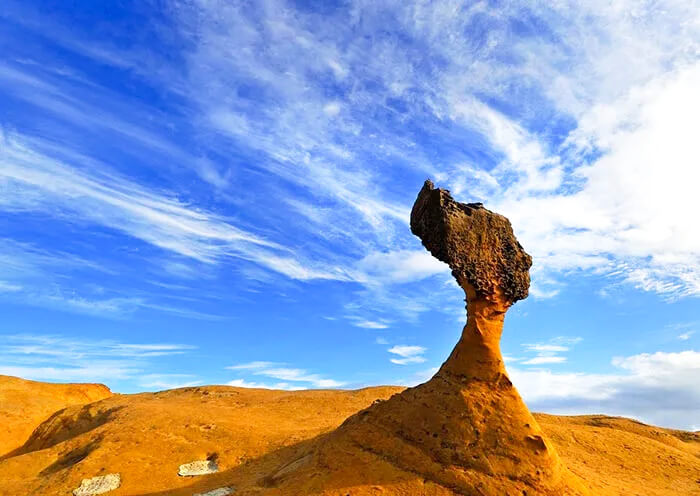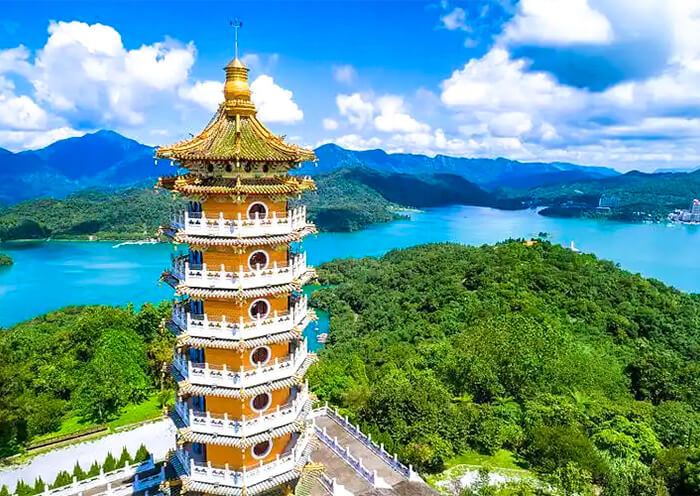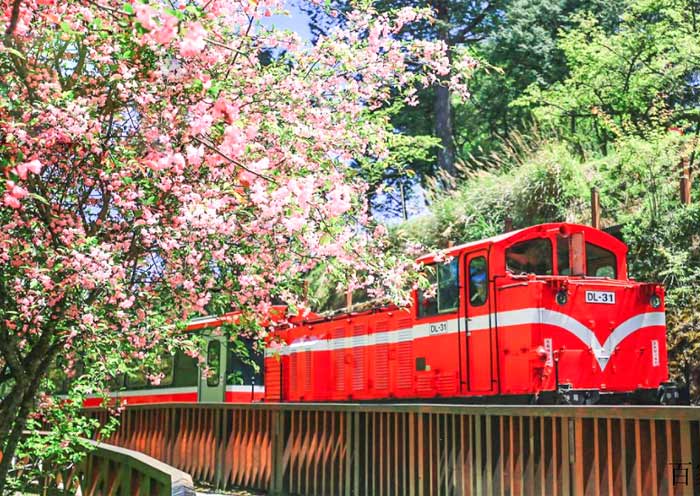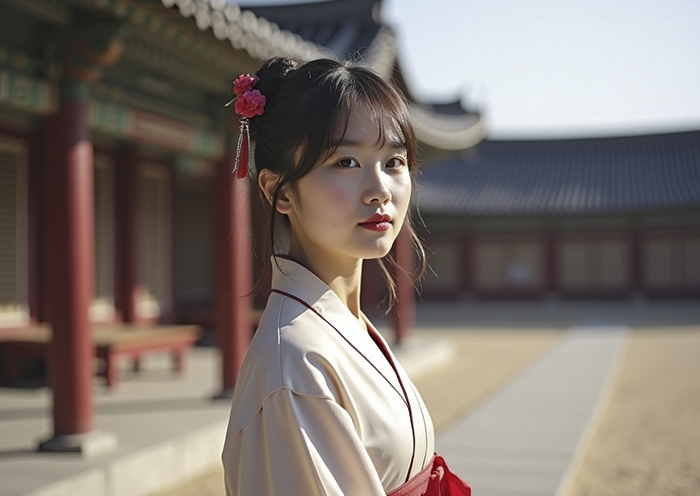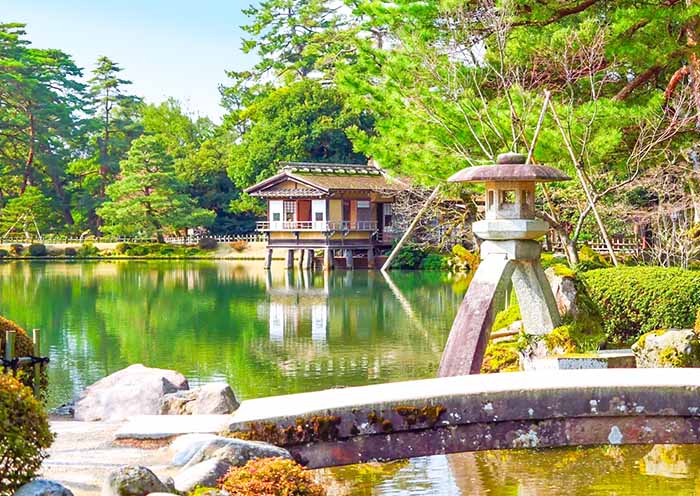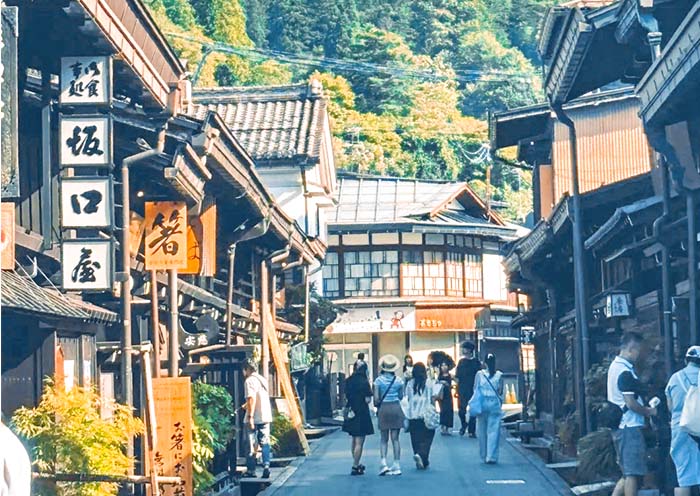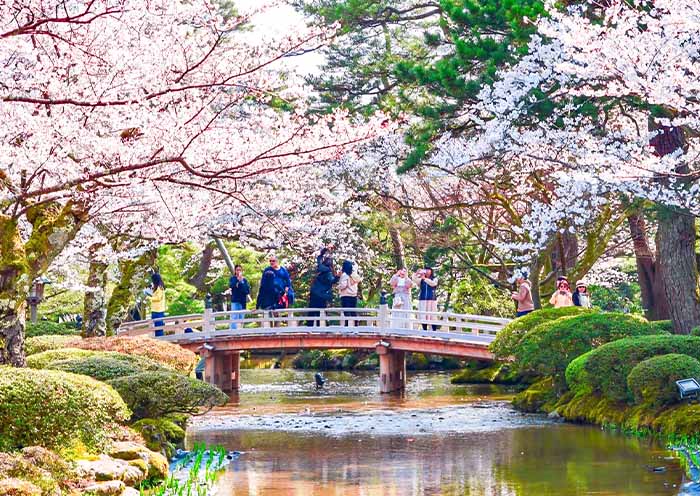14 Days Japan Taiwan Tour Package: Japan Taiwan Highlights
From
USD request![]()
- This is the price per person, based on a group of 6 people, 4-star hotel accommodation, and travel during the regular season.
- Early-bird rates apply to bookings made at least 6 months prior to the departure date.
- The price is subject to change depending on your travel season, group size, hotel class, and potential fluctuations in currency exchange rates.
- Highlights
- Itinerary
- Price
- Trip Notes
- Accommodation
- Photos
- Reviews
Discover Two of Asia’s Stunning Adjacent Islands
A long vacation for diverse culture and nature? Of course, without travelling far. Two trending travel islands, Japan and Taiwan in Asia, couldn't be better. A 3-hour flight connects them. Join our 14 Days Japan Taiwan Tour from refined Japan to relaxed Taiwan.
In Tokyo, discover Shinto culture of Meiji Jingu and oldest temple, Senso-ji Temple. Get a close-up view of Japan's tallest mountain and UNESCO site, Mount Fuji. Take bullet train to Japan's ancient capital, Kyoto. Visit UNESCO Kinkaku-ji Temple, geisha district of Gion, iconic Fushimi Inari Taisha Shrine. Feed deer in Nara and wander through Osaka's bustling streets.
Then, start in Taipei. Discover iconic Mars-like Yehliu Geopark and world-class National Palace Museum. Explore two grand natural landmarks, Sun Moon Lake and Alishan. Enjoy Buddhist and local religious culture at Fo Guang Shan Buddha Museum and Lotus Lake in Kaohsiung.
With local teams in Tokyo and Taipei, we'll help you find a great travel rhythm. Reach out to us anytime!
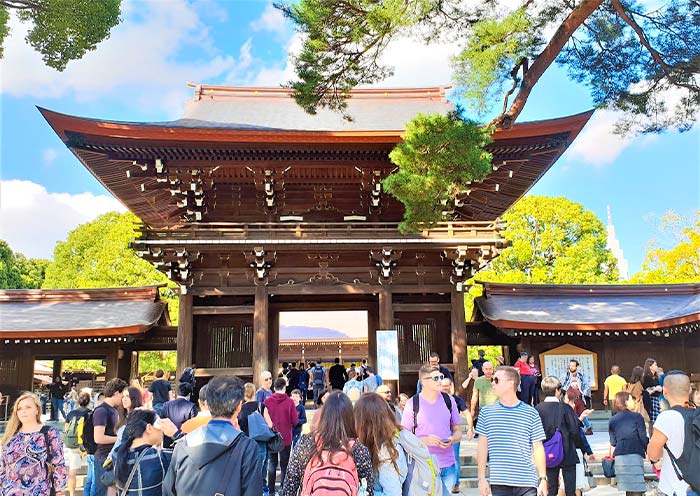
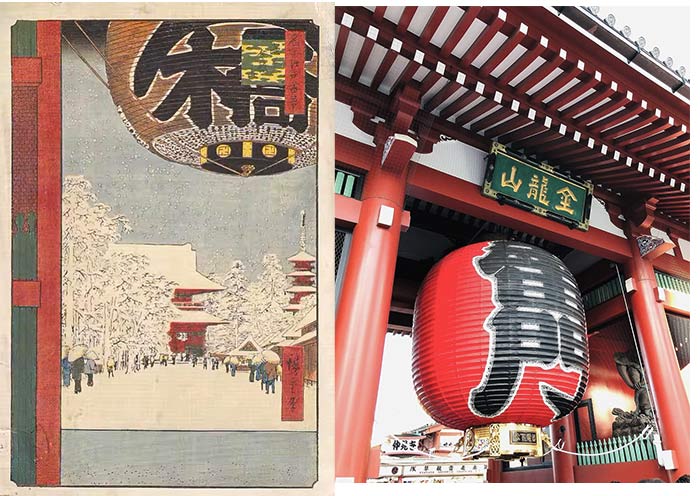
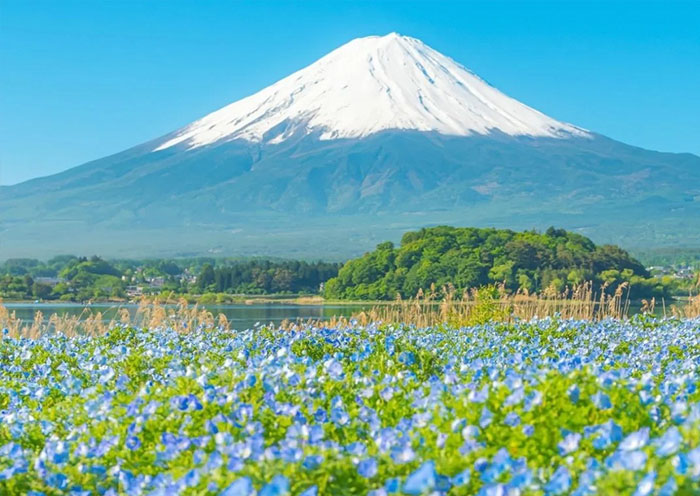
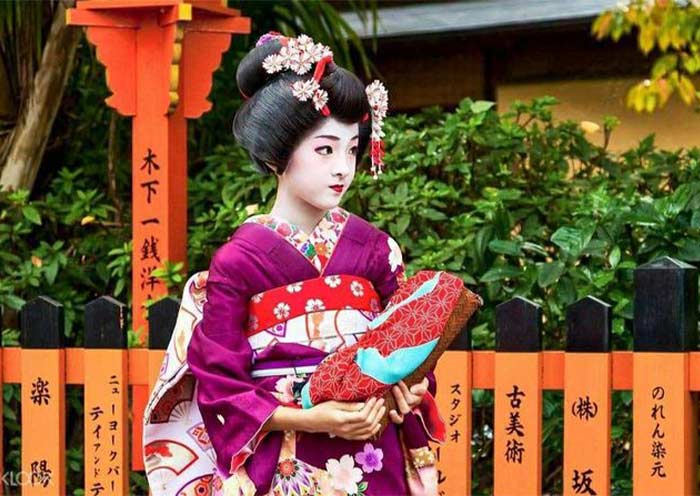
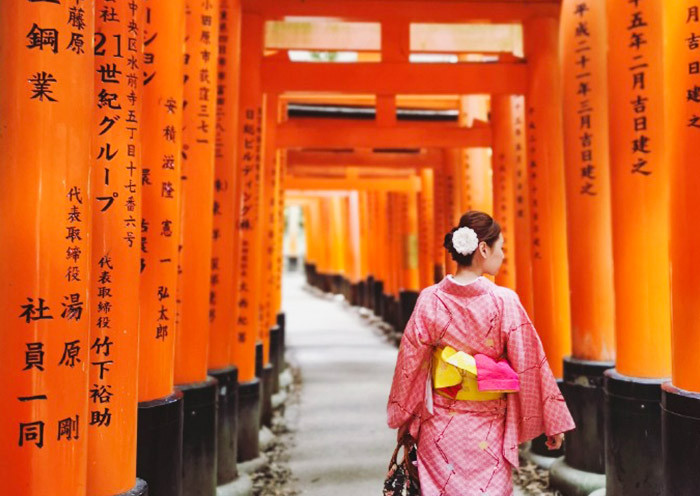
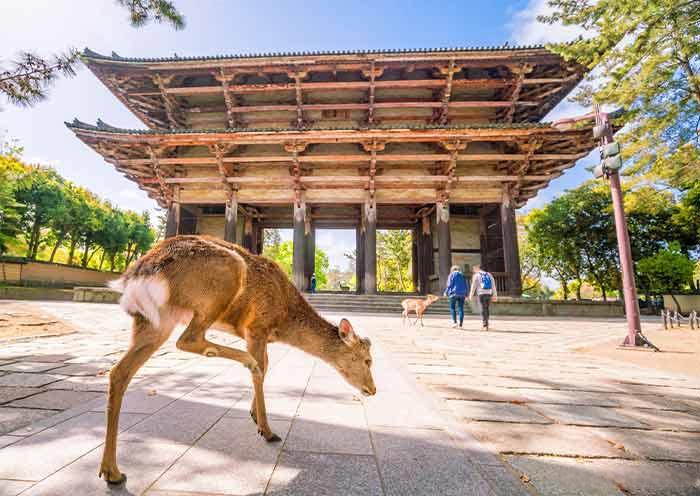
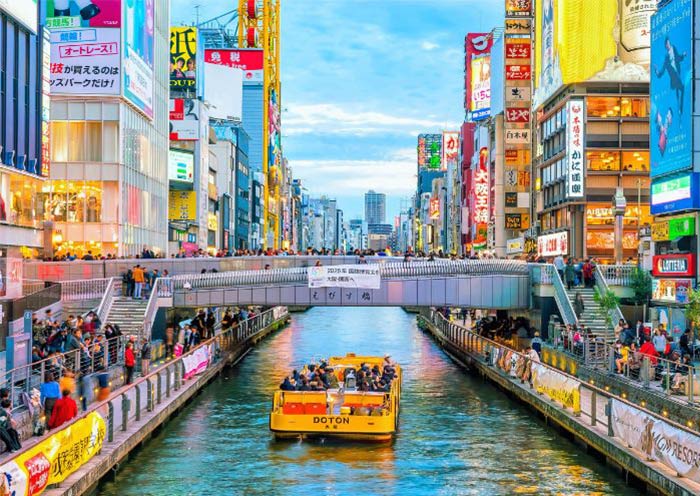
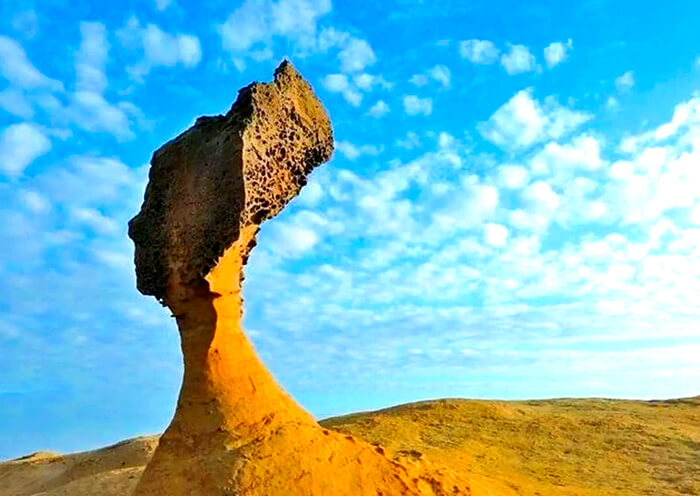
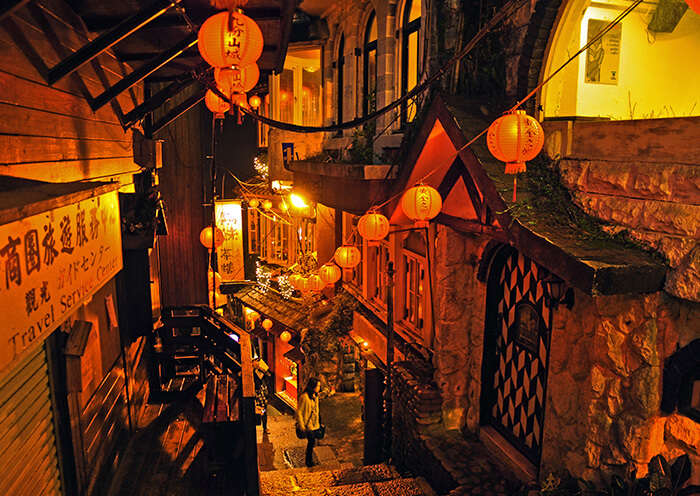
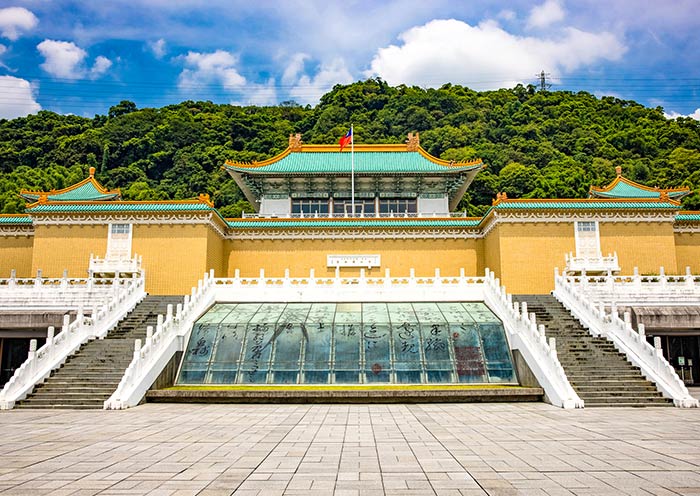
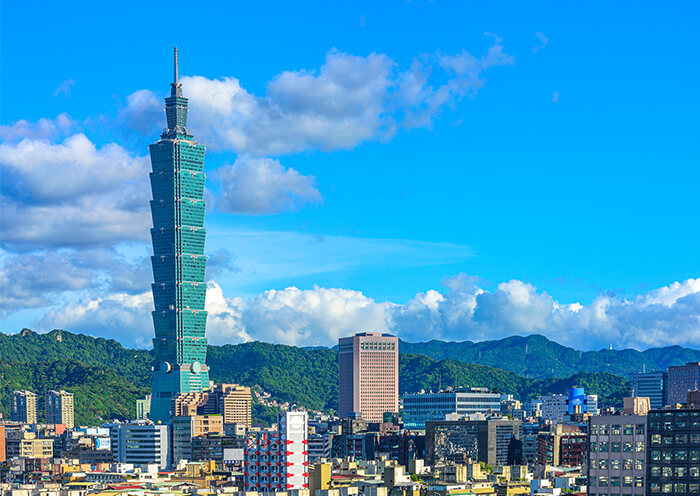
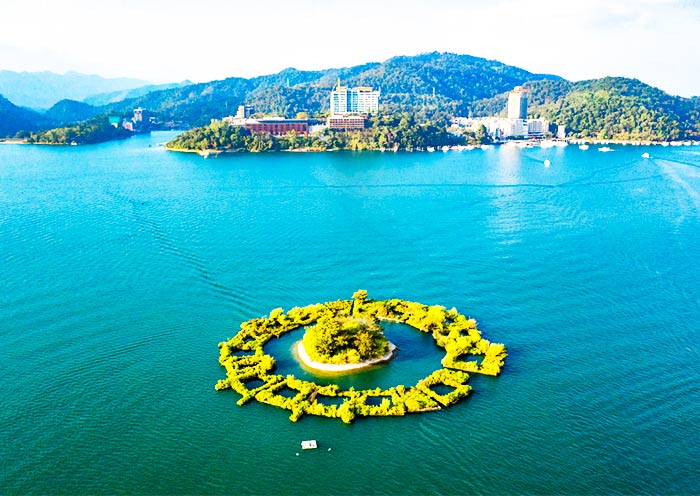
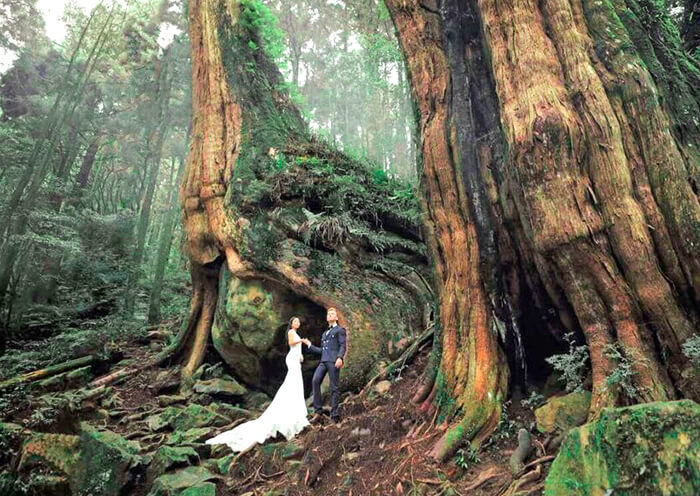
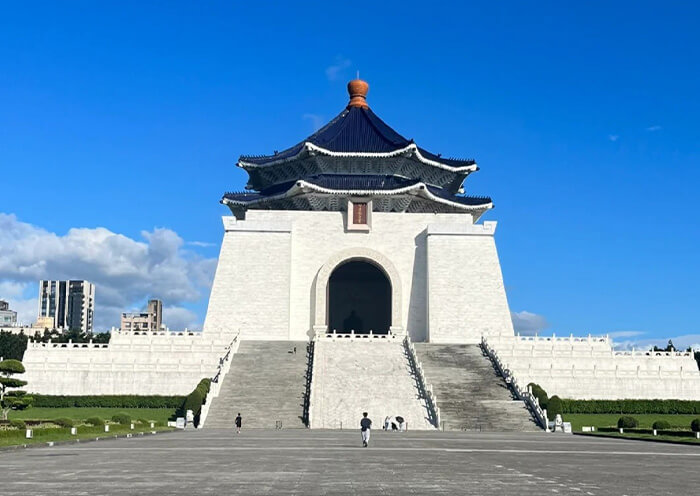
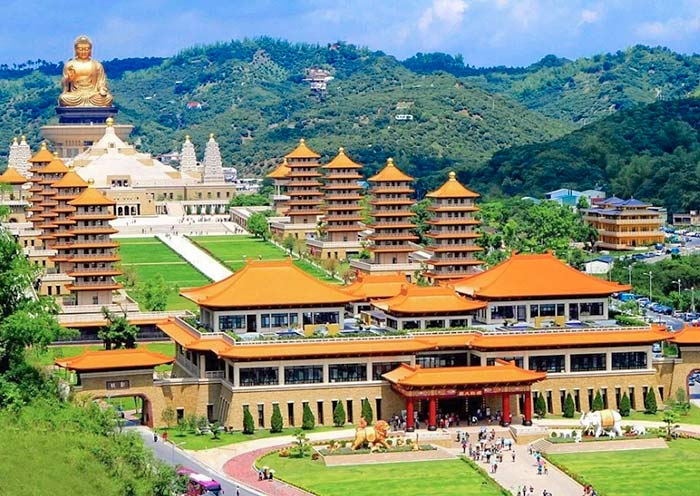
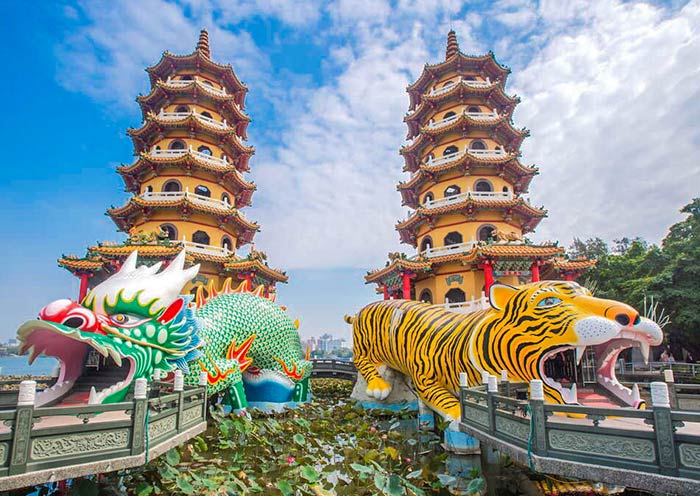
Itinerary at a Glance
Tokyo (2.5 Days)
Meiji Jingu Shrine (Meiji Shrine), Shibuya Crossing, Senso-ji Temple (Asakusa Kannon Temple), Tsukiji Outer Market (Tsukiji Fish Market)
Mt. Fuji (1 Day)
View Mt. Fuji (World Heritage), Mount Fuji 5th Station, Lake Kawaguchi, Kubota Itchiku Art Museum, Tenjo-san Park Cable Car or Lake Cruise
Kyoto (2 Days)
Kinkakuji Temple (World Heritage), Fushimi Inari Taisha Shrine, Kiyomizu-dera Temple (World Heritage), Ninenzaka & Sannenzaka, Yasaka Shrine, Gion
Japan Nara (0.5 Day)
Todaiji Temple (World Heritage), Nara Park
Osaka (0.5 Day)
Shinsaibashi-suji Shopping Street
Taipei (2.5 Days)
National Palace Museum (Closed on Mondays), Dadaocheng, Dihua Street, Chiang Kai-shek Memorial Hall, Taipei 101 (Exterior View), Yehliu Geopark, Shifen Waterfall, Shifen Old Street, Jiufen Old Street
Sun Moon Lake (1 Day)
Sun Moon Lake Cruise & Biking
Alishan (0.5 Day)
Alishan Forest Train & Hiking
Chiayi (0.5 Day)
Hinoki Village
Kaohsiung (2 Days)
Fo Guang Shan Buddha Museum (Closed on Tuesdays), Cijin Old Street (Cijin District), Lotus Lake, Pier-2 Art Center, British Consulate at Takao (Closed on Wednesdays)
Itinerary Day by Day
Konnichiwa(こんにちは)!Welcome to Tokyo, the capital city of Japan! Upon your arrival at the airport in Tokyo, your driver (not English-speaking) will meet you at the exit and then escort you to the hotel. You can have a good rest in your hotel and get ready to explore Tokyo with your guide the next day.
As one of Japan and Asia's largest economic centers, Tokyo is a hub for Japanese culture and art, with numerous museums, art galleries, theaters, and cultural venues, serving as a vital platform for artistic activities and cultural exchanges. Tokyo stands as a significant base for technological advancement, nurturing numerous high-tech companies and innovative talents, holding leading positions globally in areas like electronics, automotive, and robotics technology.
Situated at the southern end of the Kanto Plain, Tokyo is surrounded by diverse natural landscapes including Mount Fuji, providing residents with leisure and outdoor activity spaces. At one point, the population of the Tokyo metropolitan area reached 36 million, accounting for one-third of Japan's total population. Despite the high cost of living, Tokyo provides residents with convenient living conditions, offering a plethora of shopping centers, entertainment facilities, and a rich culinary culture ranging from fine dining to street food.
Arrival Ideas:
1. Japan has two commonly used international airports. Narita International Airport, located 63.5 km from the center of Tokyo, is the primary international air hub for Tokyo, where flights from China to Tokyo usually land. Tokyo International Airport (Haneda Airport), is situated 17 km from the center of Tokyo and mainly serves domestic flights within Japan and some international flights, including flights to South Korea and other East Asian regions.
2. Cities that have Direct Flights to Tokyo include, but are not limited to: Beijing, Shanghai, Guangzhou, Shenzhen, Hangzhou, Xi'an, Chengdu, Chongqing, Hong Kong, Taipei, Kaohsiung, Seoul, Singapore, Bangkok, Kuala Lumpur, Jakarta, Bali, Manila, Ho Chi Minh City, Hanoi, and more. Please note that flight information is subject to changes based on time and market demand. Contact us to obtain the latest flight information and prices.
3. In Japan, using public transportation such as the Subway JR trains is Recommended to save costs, avoid traffic congestion, and help reduce carbon emissions. Taxi Fares in Japan are relatively high, with a starting fare of around 660 Japanese yen and 140 yen per km. Waiting time is also charged. Surcharges are applicable during nighttime and peak hours (+20%), and expressway tolls are additional. Extra fees are levied for large luggage. For instance, a taxi ride from Tokyo Tower to Narita Airport, covering about 60-70 km,might cost around 25,000-35,000 Japanese yen (roughly 170-237 USD).
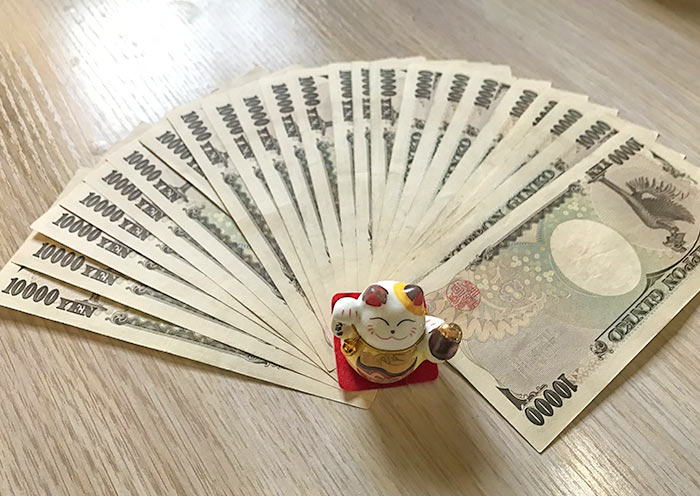
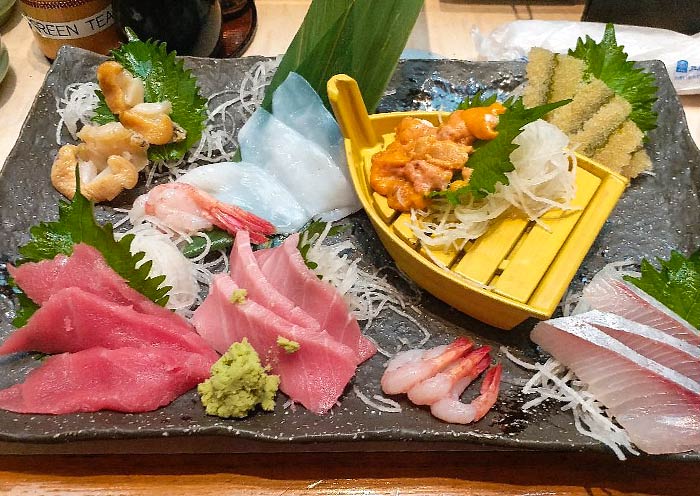
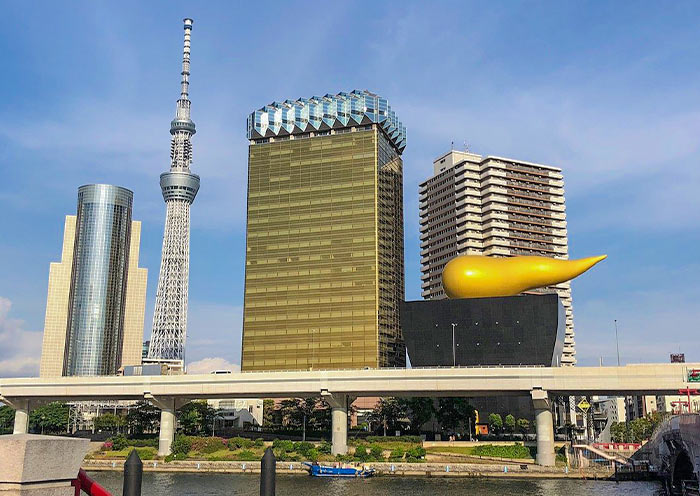
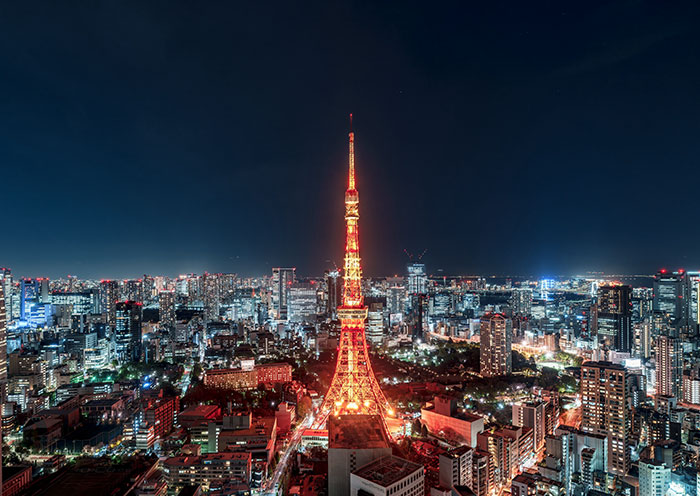
Full day explore Tokyo. You will visit Meiji Jingu Shrine (a Shinto Shrine; meet Japanese Wedding Procession), Shibuya Crossing (Hachiko, the loyal dog Statue), Senso-ji Temple (a Buddhist Temple; view Tokyo Skytree), Tsukiji Outer Market (Tsukiji Fish Market).
First to visit Meiji Jingu Shrine (Meiji Shrine), a Shinto Shrine dedicated to Emperor Meiji (1852-1912) and Empress Shoken (1849-1914), who played a crucial role in modernizing Japan while excelled in writing Waka (traditional Japanese poems of 31 syllables in the pattern 5-7-5-7-7). Meiji Shrine is a popular venue for traditional weddings, where you will have the opportunity to witness a Japanese Wedding Procession, experiencing the charm of Japanese traditional culture.
Founded in 1915 and finished in 1920, Meiji Shrine features a unique architectural style, with the main hall adopting traditional Japanese Shinto Shrine architecture infused with modern elements in its details. You will walk through Japan's Largest Wooden Torii Gate, standing in its natural wooden hue and weighing up to 13 tons. The Torii gate serves as the Symbol of Shinto Shrines, marking the transition from the worldly to the sacred. Walking through this gateway symbolizes stepping into the divine realm, evoking a profound sense of mystery and reverence.
As a peaceful oasis in the city, Meiji Jingu Shrine is the largest green space in the center of Tokyo. In the land-scarce city of Tokyo, the vast area occupied by the Meiji Shrine is truly astonishing! The sacred forest (170,000 trees) surrounding the main shrine buildings of Meiji Jingu is man-made, planted by 110,000 volunteers in honor of their beloved Emperor Meiji (established Shinto as the state religion) and Empress Shoken. The forest serves also to separate the sacred from the profane world.
Take a stroll along the paths and enjoy the fresh air and natural beauty. Then, you will notice the impressive Sake Barrel Wall along the South Approach, which features offerings from sake breweries and believers across Japan, including barrels of sake and Western liquor, reflecting Emperor Meiji's fondness for Western culture. At the main hall of Meiji Shrine, you can witness locals washing their hands and rinsing their mouths at Purification Font before worship as a sign of respect. You can offer a 5-yen coin (symbolizing a connection) like locals and pray for blessings. In the eyes of the Japanese, Meiji Shrine is considered to have such boundless capabilities, from naming ceremonies for newborns, to coming-of-age ceremonies, graduation ceremonies, seek marriage partners, pray for world peace, family well-being, safe travels, good health, warding off calamity, etc. In addition to immersing yourself in Japanese Shinto traditions and architecture, revel in the enchanting surroundings filled with lush trees, serene ponds, graceful bridges, and stone pathways that epitomize the essence of traditional Japanese garden art. You should visit here to enjoy the vibrant bloom of cherry blossoms in spring, the verdant beauty of summer, the fiery hues of autumn leaves, and the serene snowy landscapes of winter.
Tips for Visiting Meiji Jingu Shrine:
1. Wear modest clothing: Respect the sacred nature of the shrine by dressing appropriately.
2. Be mindful of noise levels: Maintain a quiet and respectful atmosphere.
3. Inner Garden (Optional; self-pay; once Imperial Property), and Meiji Jingu Museum (Optional; self-pay; items used by the imperial couple).
Then, move to visit Shibuya Crossing, one of the busiest intersections in the world, accommodating approximately 3,000 people per minute. As one of Tokyo's iconic locations, Shibuya attracts tourists and photographers from around the globe who come to observe and capture its essence. Numerous movies, TV shows, commercials, and music videos are filmed at this location, such as "Detective Chinatown 3" and "The Fast and the Furious: Tokyo Drift." Additionally, the well-known story of Hachiko the Loyal Dog originates here. Hachiko, an Akita dog, continued to visit the station daily to await his deceased owner's return. The Hachiko Statue located in front of Shibuya Station stands as a significant cultural landmark in the Shibuya area, attracting numerous visitors annually who come to pay their respects and honor his loyalty.
In the afternoon, head to Senso-ji Temple (Asakusa Kannon Temple), a must-visit for anyone traveling to Tokyo. Here, you can experience the heart of old Tokyo and its vibrant atmosphere. You can take photos that frame Senso-ji Temple and the Tokyo Skytree;(Japan's Tallest Tower; 634 meters) together.
Senso-ji Temple was built in 628 AD and has a history of over 1300 years, making it one of Japan's oldest temples. It not only witnesses Japan's historical changes but also carries a rich Buddhist culture. The architectural style of Senso-ji Temple blends Japanese traditional culture and art, with rich colors and exquisite carvings. The main buildings include the main gate (Kaminarimon; a landmark of Tokyo), the bell tower, the Five-story Pagoda (a landmark of Tokyo), and the main hall, all reflecting ancient Japanese architectural style and religious beliefs.
Kaminarimon is the iconic structure of Senso-ji Temple, towering at 11.7 meters high and 21.7 meters wide, truly spectacular. Giant Red Lanterns hang in front of the gate, with the words "Kaminarimon" prominently displayed. Kaminarimon is not only a symbol of Senso-ji Temple but also one of Tokyo's most famous landmarks. You may have seen the work of Utagawa Hiroshige, one of the "Three Greats of Ukiyo-e," in his piece "One Hundred Famous Views of Edo: Asakusa Kaminarimon," depicting a snowy scene of the Kaminarimon gate, celebrated for its delicate portrayal and profound imagery, becoming a masterpiece of Ukiyo-e art. The area is bustling, and crowded with people coming to pray and seek blessings for health, peace, and happiness. Around Senso-ji Temple, you can taste various Japanese cuisines, purchase unique souvenirs, and participate in various celebratory activities.
After that, you can explore Tsukiji Fish Market (Now Toyosu Market). Tsukiji Fish Market was once the world's largest fish market, famous for its tuna auctions. However, in 2018, it relocated to a new, larger facility called Toyosu Market. You can still enjoy fresh seafood (sashimi, sushi, or seafood rice bowls), purchase kitchenware, and learn about a variety of seafood, including the characteristics, cooking methods, and nutritional value of different types of seafood.
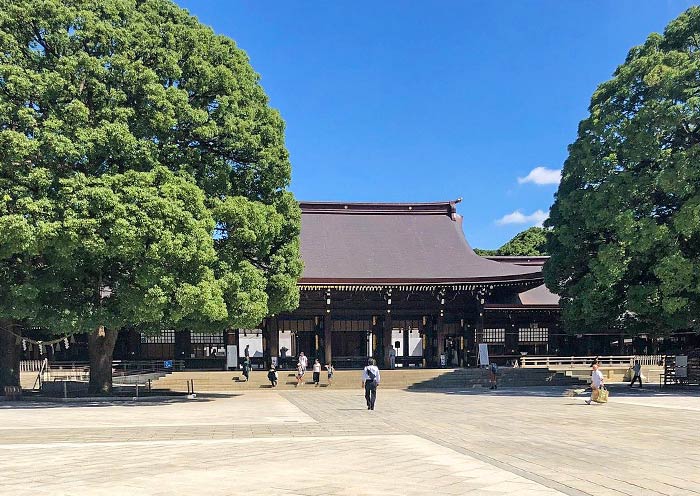
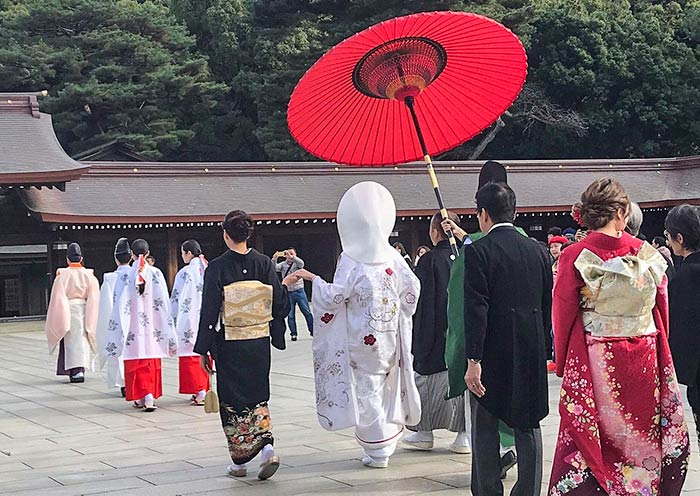
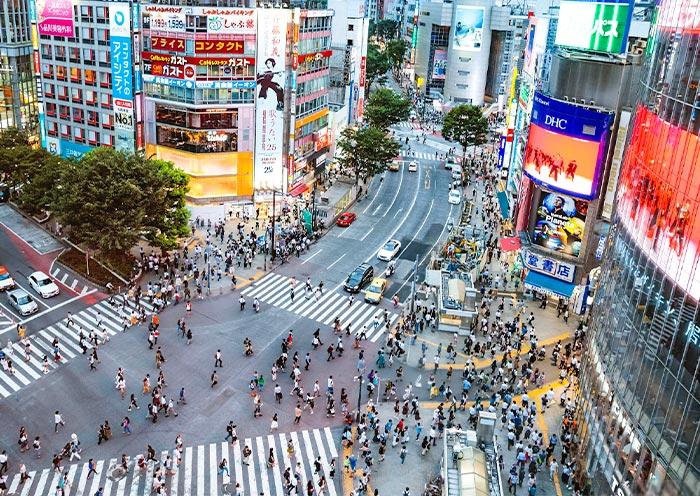
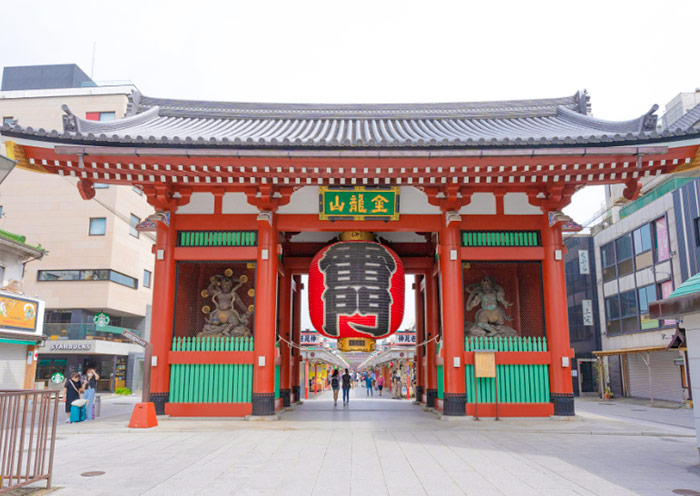
Today, it will be a full-day round trip (300 km) to admire the breathtaking views of Mount Fuji from the Mount Fuji 5th Station, Lake Kawaguchi.
Mount Fuji is the tallest mountain in Japan. It's a famous volcano with a perfectly symmetrical cone shape. Visiting Mount Fuji is essential for any traveler in Japan. As a UNESCO World Heritage Site, Mount Fuji (3,776 m) stands as an iconic symbol of Japan, a cultural and spiritual landmark (recognized as a holy mountain in Shintoism), and a natural marvel. When picturing Mount Fuji, its distinctive perfect cone shape and snow-capped peak likely come to mind. Among the most renowned depictions is Katsushika Hokusai's 'Thirty-Six Views of Mount Fuji'. Hokusai, one of the "Three Greats of Ukiyo-e," is best known for his masterpiece "The Great Wave off Kanagawa."
Start your journey to Mount Fuji 5th Station for a close-up Mount Fuji view. It offers breathtaking panoramic views of Mount Fuji (if weather permits) and the surrounding area, including the Fuji Five Lakes. For those adventurous enough, the 5th Station is the starting point for climbing Mount Fuji. Experience the unique alpine environment and the thrill of being so close to Japan's iconic mountain.
Then, head to Lake Kawaguchi for a leisurely walk along the lakeside. Lake Kawaguchi is renowned for its clear waters that often reflect the majestic Mount Fuji (if weather permits), creating a postcard-perfect scene and making it a popular destination for both domestic and international tourists.
For art lovers, the next stop is the Kubota Itchiku Art Museum, located near Lake Kawaguchi. This unique architectural space houses a collection of beautiful rare kimonos, all designed and created by artist Ichiku Kubota. Ichiku Kubota (1917–2003) was a master textile artist renowned for his exquisitely crafted kimonos. He developed his own complex dyeing techniques, creating intricate patterns and colors inspired by nature, landscapes, and traditional Japanese culture. The tranquil museum setting also offers beautiful views of Mt. Fuji and the lake.
After exploring the museum, choose between two scenic experiences: a cable car ride at Tenjo-san Park or a peaceful cruise on Lake Kawaguchi.
Tenjo-san Park (Cable Car): Take a scenic cable car ride up to the park’s observation area. From the top, you’ll be treated to a stunning 360-degree view of Mt. Fuji, Lake Kawaguchi, and the surrounding countryside.
Alternatively: Lake Kawaguchi Cruise: If you prefer a more tranquil experience, you can opt for a lake cruise on Lake Kawaguchi. This leisurely boat ride offers beautiful views of Mt. Fuji from the water, allowing you to appreciate the landscape from a different perspective.
After that, head back to Tokyo overnight and have a good rest.
Notes:
- If the weather is clear, you can enjoy a good view of Mt. Fuji. However, if the weather is not favorable, Mt. Fuji may not be visible.
- The best time to view Mount Fuji is generally from Nov. to Feb. when skies are clearer and the peak is snow-capped. Nevertheless, it's important to keep in mind that weather can be unpredictable, and even during these months, there is no guarantee of a clear view.
- Early mornings often provide the best visibility before clouds obscure the view. Different locations around Mount Fuji offer varying perspectives, with some spots known for their clear views.
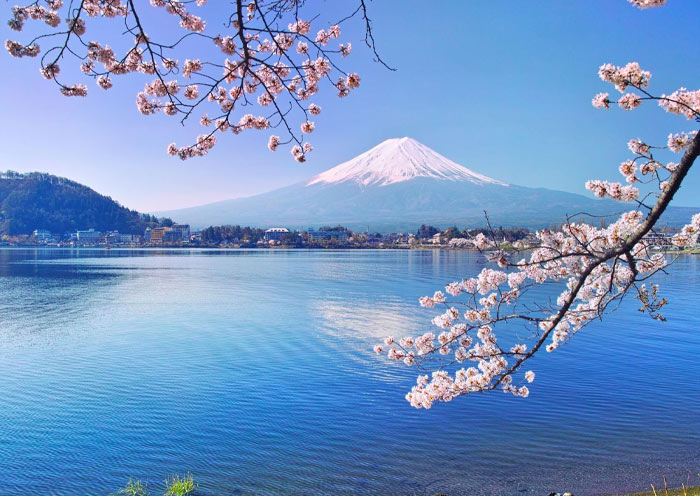
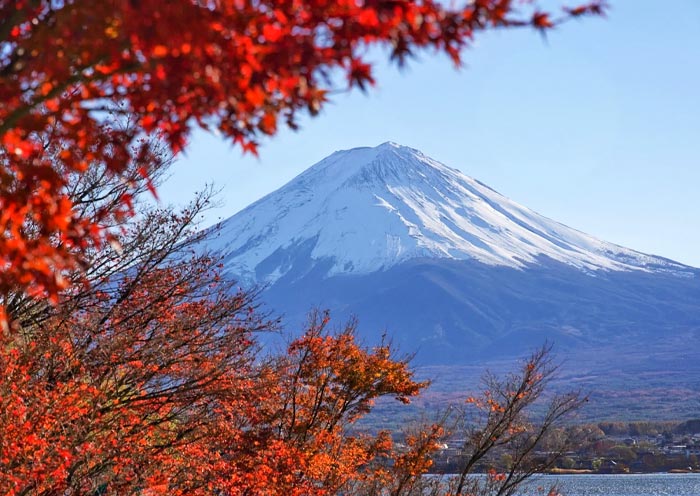
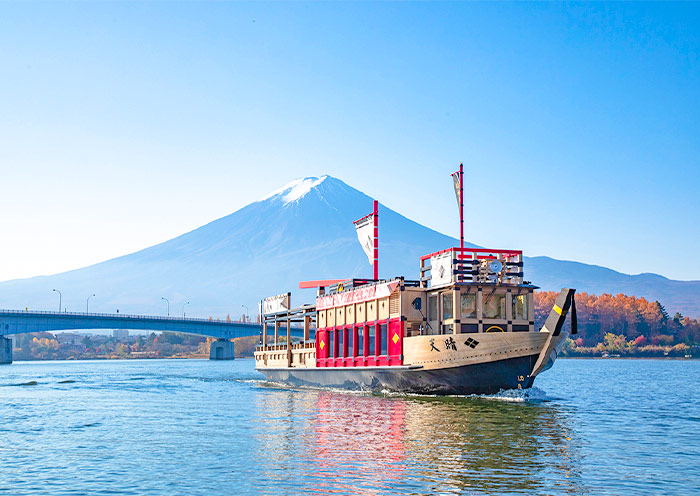
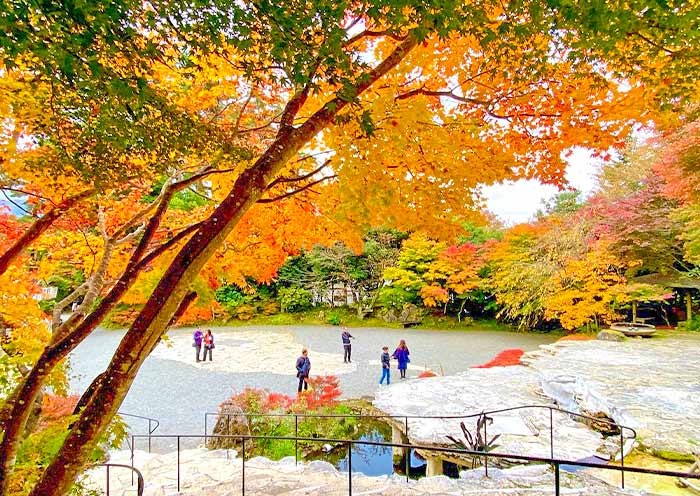
Today, you will take the Shinkansen (Bullet Train) to Kyoto from Tokyo Station. A driver will wait for you at the hotel entrance at the scheduled time and transport you to Tokyo Station.
Shinkansen Ride: At Tokyo Station, board the Shinkansen (Bullet Train) bound for Kyoto Station (about 2.5 hours). This fast and comfortable journey offers a chance to enjoy the changing landscapes of urban and rural Japan. Tokyo Station, a prominent feature on the ¥10,000 Japanese banknote, is more than just a transportation hub, it is a historical landmark and a vibrant destination in its own right. As the main gateway to the city, Tokyo Station has played a crucial role in Japan's modernization and economic development. Its impressive red-brick facade and intricate details are a testament to Japanese architectural prowess. The station has become a symbol of Tokyo and a popular tourist attraction.
Upon arrival in Kyoto, your driver will greet you and transfer you to your hotel for check in.
Kyoto, located in the Kansai region of the country, was once the capital of Japan. It epitomizes ancient Japan and is famous for tranquil temples, exquisite gardens, colorful shrines, grand imperial palaces, and ornate castles. Boasting 17 UNESCO World Heritage Sites, over 1,000 Buddhist temples, and more than 400 Shinto shrines, Kyoto is among the world's most culturally rich cities. It's also known for traditional Japanese arts and practices, such as tea ceremonies, kaiseki dining (a traditional multi-course meal), and ikebana (flower arranging). It remains one of the best places to see geishas, who are traditional Japanese female entertainers known for their refined skills in arts, music, dance, and conversation.
Start your half day with a visit to one of Kyoto's most iconic sights, Kinkakuji Temple (Golden Pavilion) - a UNESCO World Heritage site. This Zen Buddhist temple is famous for its stunning golden exterior. The temple's stunning visual appeal comes from its top two floors, which are completely covered in gold leaf. The reflection of the golden structure shimmering in the pond in front of it, making it perfect for photos and quiet reflection. It was originally built in 1397 as a retirement villa for Shogun Ashikaga Yoshimitsu. After Yoshimitsu's death, as per his will, the villa was converted into a Zen temple by his son.
Stay overnight in Kyoto.
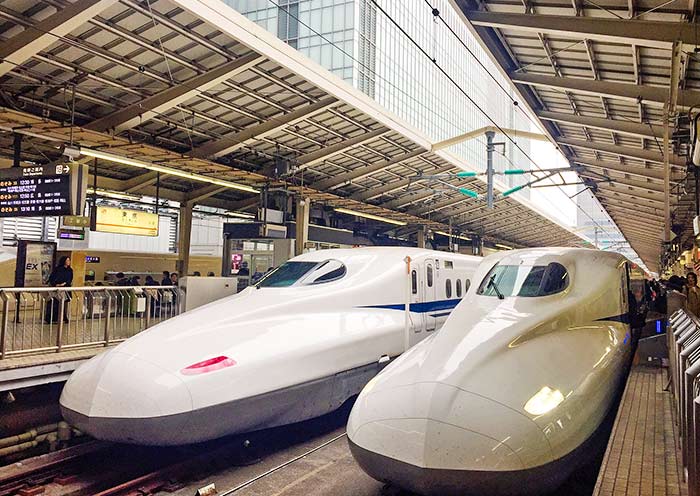

Start morning in Kyoto bright and early at one of its most iconic sites - the Fushimi Inari-taisha Shrine to beat the crowds.
Fushimi Inari Taisha Shrine is famous for its thousands of vermilion torii gates, known as Senbon Torii (“thousands of torii gates”). Layers upon layers of vermilion torii gates line the lush, wooded hillside, forming a seemingly endless corridor. The vibrant orange and black gates contrast beautifully with the surrounding greenery, creating a visually stunning and almost otherworldly path that is highly photogenic.
Fushimi Inari Taisha was founded in the early 8th century (711 AD) and is primarily dedicated to Inari, the Shinto god of rice, fertility, sake, agriculture, and industry. As you explore the shrine, you will encounter hundreds of fox statues. Said to be the messengers of the god Inari, who is associated with cereal grains, these fox statues often symbolize the deity. Many of these fox statues are depicted holding a key in their mouths, which is said to open the granary.
Tips: Hiking to the summit of the mountain and back will take two to three hours, but many people go only as far as the Yotsutsuji intersection because there are fewer torii gates beyond this point. It will take 30 to 40 minutes to reach Yotsutsuji.
Next, visit Kiyomizudera Temple, another UNESCO World Heritage Site. Perched on the hillside of Eastern Kyoto, this temple is renowned for its wooden stage that juts out over the hill, providing stunning views of the city and the surrounding nature. The temple's main hall, constructed entirely without the use of nails, is an architectural marvel. Kiyomizu-dera is also celebrated for its sacred waters, which are believed to have wish-granting powers that draw countless visitors who come to drink from its stream. Don’t miss the Hondo (Main Hall), Jishu Shrine, the Otowa Waterfall, and the spiritual experience of the Tainai-Meguri room.
Tips: The scenery at Kiyomizudera Temple is distinctively beautiful in each season, offering a unique charm year-round. In spring, the mountains are adorned with charming cherry blossoms; in summer, they are lush with vibrant greenery; in autumn, they are decorated with brilliantly colored leaves; and in winter, they are filled with enchanting trees.
Then, walk up the well-preserved streets of Ninenzaka and Sannenzaka towards Kiyomizu-dera Temple. These charming, sloping streets are lined with traditional shops and quaint tea houses, offering a nostalgic glimpse into Kyoto's past. As you stroll through these areas, you can shop for unique crafts, sample local snacks, and perhaps stop at a café to relax and soak in the atmosphere of old Kyoto.
From Ninenzaka & Sannenzaka, a short walk will bring you to Yasaka Shrine, the guardian shrine of the Gion entertainment district, which dates back over 1350 years. Yasaka Shrine is particularly favored by those seeking beauty and wealth. Visiting this significant Shinto shrine in Kyoto, you may also find yourself gaining some good luck. The shrine is most famous for its Gion Matsuri in July, during which you can witness the procession where the deities of Yasaka are paraded through the city streets.
Your day culminates with a visit to Gion, Kyoto's famous geisha district. Here, you might catch a glimpse of Geisha (Geiko) in their elaborate kimonos and traditional makeup. As you wander through the cobblestone streets of Gion, take a moment to appreciate the beautifully preserved machiya (wooden townhouses), ochaya (teahouses), and exclusive ryotei (traditional Japanese restaurants).
Stay overnight in Kyoto.
Optional Activities:
- Join a geisha tea ceremony in Kyoto.It offers a chance to see a performance by a geisha, experience the tea ceremony, and learn all about its artful rituals.
- Kyoto traditional kimono experience.Wear a traditional kimono and stroll through scenic districts like Gion or around Kiyomizu-Dera Temple. Enjoy photo opportunities and the feel of traditional Japan.
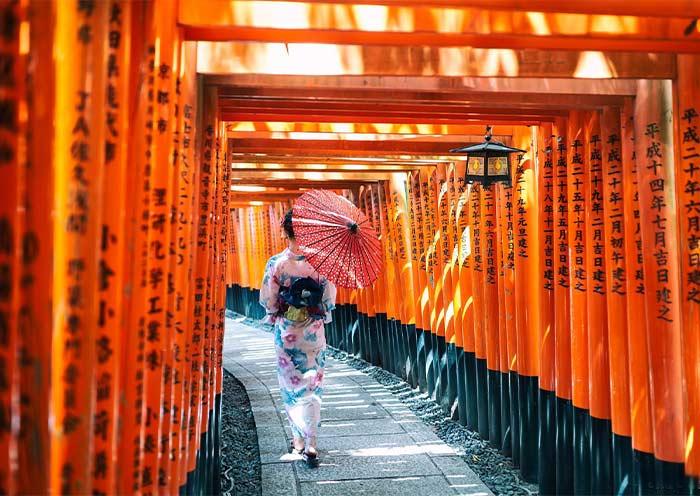
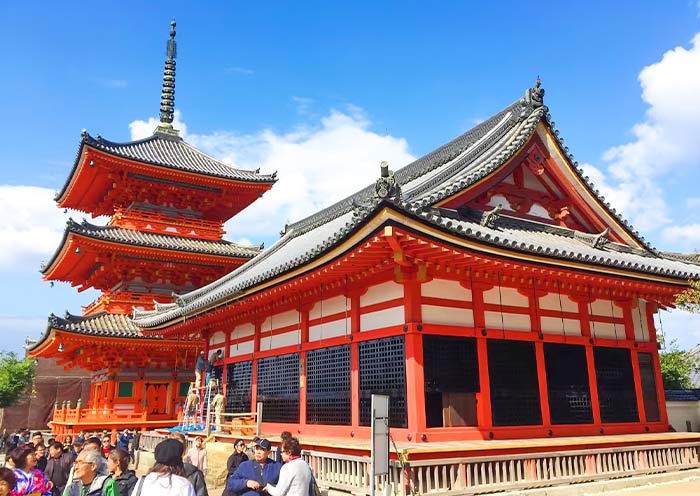
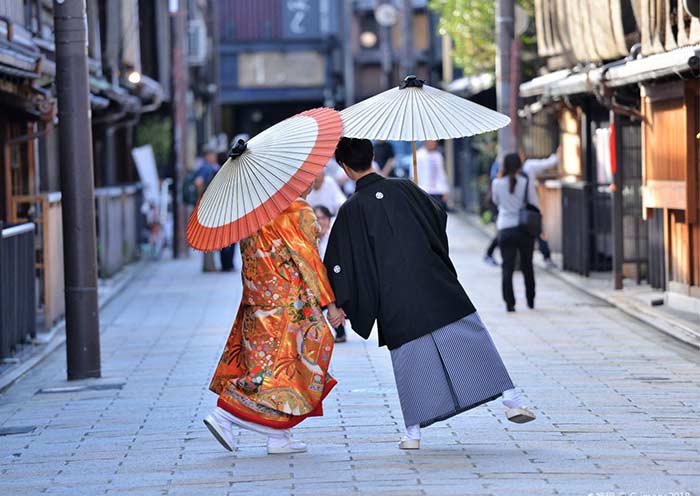
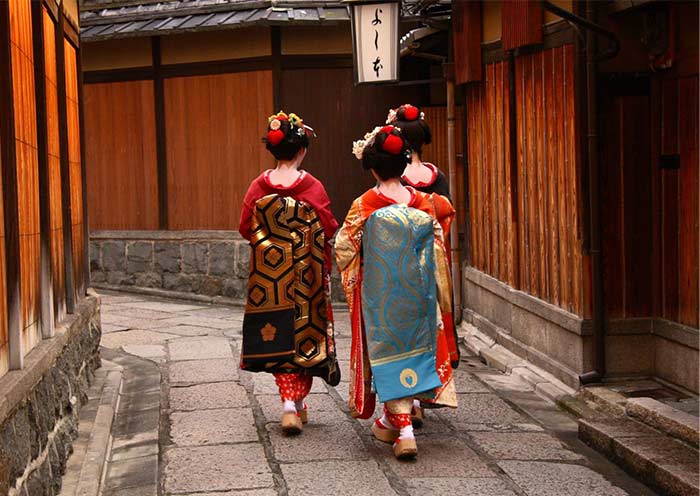
Depart from Kyoto and head to Nara, an approximately 1.5-hour car car ride. Nara holds a special place in Japanese history as the country's first permanent capital, predating Kyoto. Nara boasts eight World Cultural Heritage sites, making it Japan's second most culturally rich city after Kyoto.
Visit Todaiji Temple, one of Japan's most historically significant temples and a UNESCO World Heritage site. It is known for housing the world’s largest bronze statue of the Buddha Vairocana, which stands just over 16m high and consists of 437 tonnes of bronze and 130kg of gold. It represents Vairocana Buddha and is flanked by two Bodhisattvas. Todaiji's main hall, Daibutsu-den (Big Buddha Hall), is one of the world’s largest all-wood buildings, despite the fact that the present reconstruction of 1692 is only two-thirds of the original temple hall's size.
Walk to Nara Park, adjacent to Kasuga Taisha. This park is famous for its hundreds of freely roaming deer, considered messengers of the gods in Shinto tradition. Purchase some shika senbei (deer crackers) to feed the deer as you stroll through the park.
After the tour, drive to Osaka (typically takes around 45 minutes to an hour). Enjoy shopping at Shinsaibashi-suji Shopping Street, Osaka's busiest shopping arcade.
Stay overnight in Osaka.
Optional Activities:
Kamigata Ukiyoe Museum offers a fascinating glimpse into the traditional Japanese art form of ukiyo-e.
Shinsekai (New World) & Tsutenkaku Tower: Shinsekai, meaning "New World," is a nostalgic and unique shopping district in Osaka, known for its retro vibe, old-school charm, and vibrant atmosphere. Originally built in 1912, Tsutenkaku Tower offers views of the Osaka skyline and is located in the retro-themed Shinsekai area.
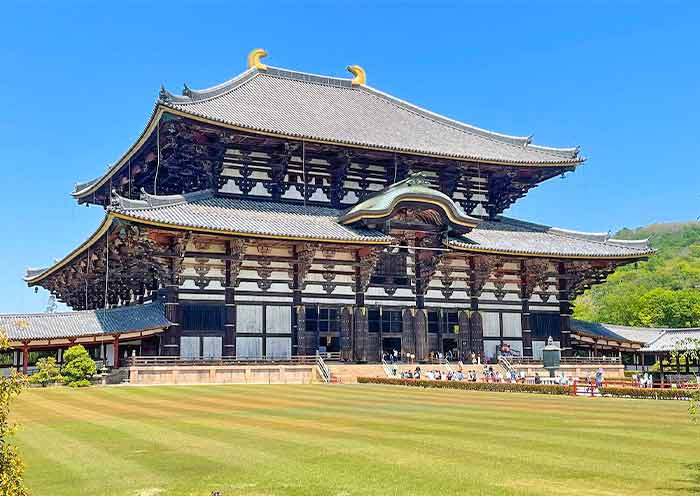
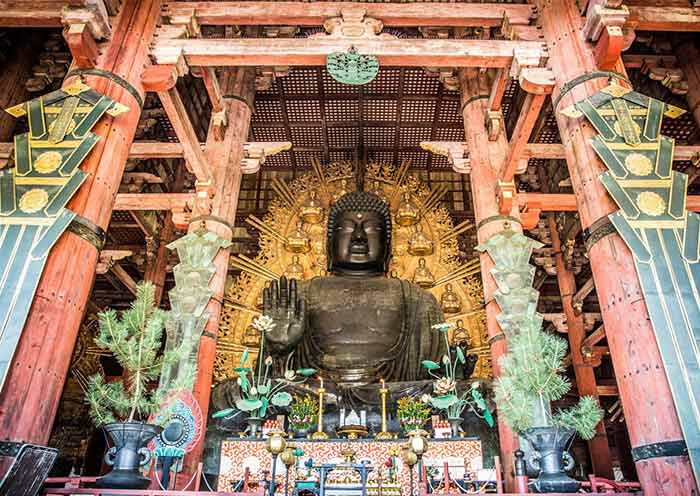

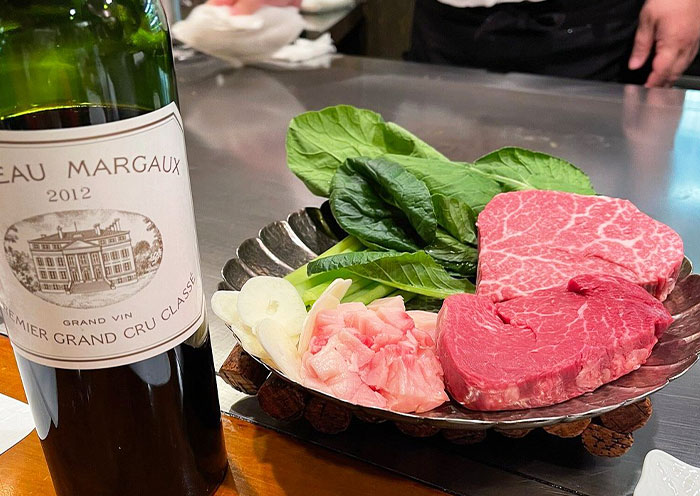
It is time to end your Japan Tour. You will have some free time in Japan to explore further on your own until your driver escorts you to the airport for your flight to Taipei in Taiwan.
Upon your arrival in Taipei, our guide and driver will pick you up at Taiwan Taoyuan International Airport (TPE) and take you to your hotel for check-in. Stretch your muscles and relax—you have more days to discover Taiwan.
Spare Your Free Time:
Taipei is a city that simply feels happy. You might not expect a city to be so gentle and subtle, but that's exactly what it is! Everyone in Taipei genuinely radiates a relaxed comfort; they're polite and wonderfully helpful. You can wander the streets, lose yourself staring at shop signs, or strike up conversations with passersby. These are moments of "quiet happiness."
Or savor tasty local snacks at Shilin Night Market (士林夜市). It’s Taipei's top night market – the largest and most famous. First-time visitors to Taipei usually choose this one, with over 500 food stalls.
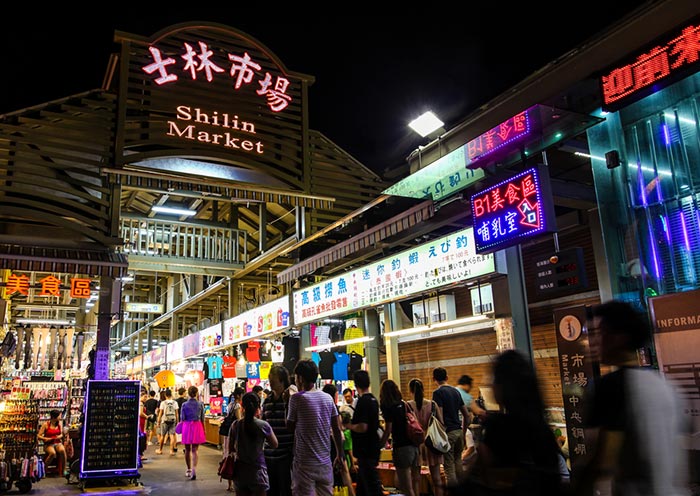

Today, enjoy a day in Taipei’s bustling city center.
First, head to the National Palace Museum (故宫博物院). It's one of the best museums in the world. Finished in 1965 in the style of traditional Chinese palace, museum houses almost 700,000 items, showing Chinese art from 8,000 years ago all the way to today.
Most of the amazing items are on the main four-story floor. You’ll admire three national treasures: Meat-Shaped Stone (looks like real pork belly), Jadeite Cabbage with Insects (a beautiful jade carving that was part of a queen's dowry), and Mao Gong Ding (an ancient bronze pot from Western Zhou Dynasty with ancient offer” inside). Look into ancient times that have long passed.
Second, come to Taiwan’s oldest district - Dadaocheng (大稻埕) & Dihua Street (迪化街) for city walk. Daocheng, a prior top 1 trade port in 1851, is now a living museum of Taipei's urban culture. A one-stop shop sells tea, traditional Chinese medicine, food, and more. This area saves shopping memories for generations of old-school Taiwanese. Spend time, go to Dadaocheng!
Stroll along Dadaocheng Wharf to enjoy the breeze. And, wander through Dihua Street within Dadaocheng, browse its various shops, old-style architecture, and the City God Temple.
Third, visit Chiang Kai-shek Memorial Hall (中正纪念堂), one of Taipei's iconic landmarks. Completed in 1980, it was built to commemorate the first president of the Republic of China. The memorial hall features white walls and a roof adorned with sapphire blue glazed tiles.
First floor displays Japan's instrument of surrender from World War II and life of this political powerhouse. Go ahead to outer plaza. You can get a good shot to visit the Changing of the Guard ceremony, which takes place every hour on the hour.
Then, head to the foot of Taipei 101 to admire its exterior. At 508 meters high, Taipei 101 is the most iconic landmark in Taipei, holding the title of "world's tallest building" from 2004 to 2010. Its bamboo-stalk design blesses continuous growth and prosperity in Chinese culture.
Optional: You can opt to visit the panoramic view of Taipei city on the 89th floor.
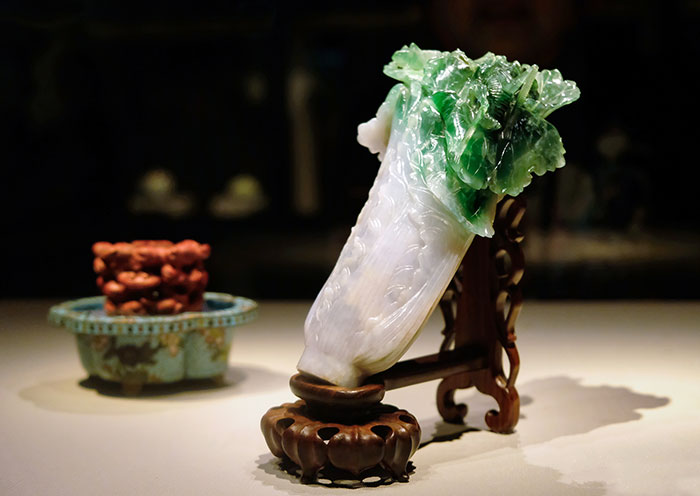
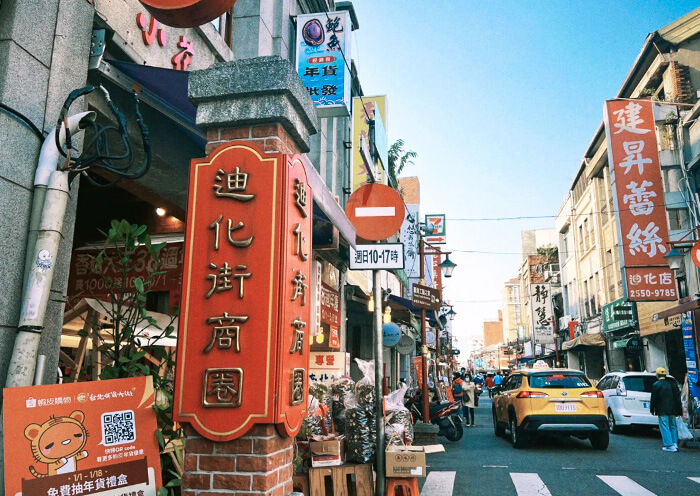
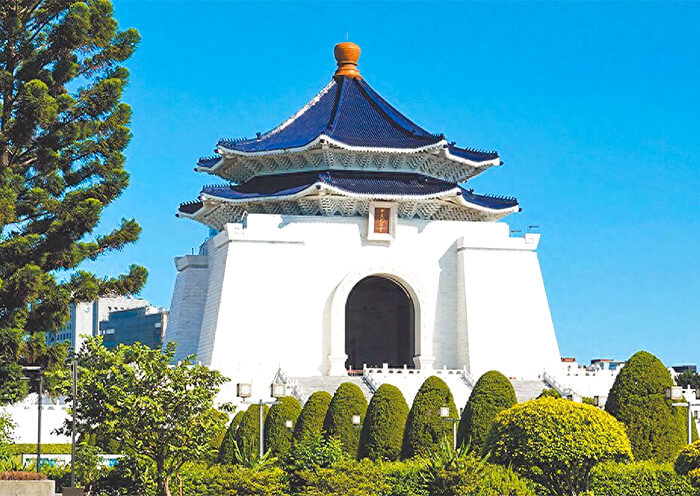
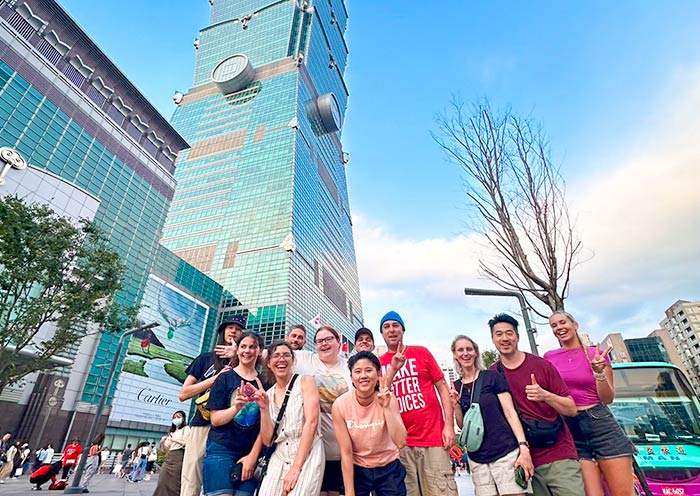
Today, you will tour unique rocks, waterfall, romantic old street in a day.
After breakfast, drive 30-40 minutes from the hotel to Yehliu Geopark (野柳地质公园), a must-see in Taiwan. It’s the most iconic geological park in northern Taiwan, and was even praised by CNN as the most Mars-like place on Earth. The strange rocks are highlight of this 1,700-meter-long narrow cape. It could be a surprise if you facetime someone and say “Guess where I am!”
In scenic area, Queen’s head (女王头), Taiwan tourism's landmark and calling card, will amaze you. The 2 meters tall rock, with a slender neck, resembles a queen sitting majestically, facing sea with her wind-blown crown. Long way to admire other rocks! Let your imagination run wild. Nature has no fixed answers.
Yehliu is also an important stopover for migratory birds, so birder would have a double gift in March, April, and October.
Next, we'll drive 0.8h to Shifen Waterfall (十分瀑布), famous as "Taiwan's Niagara Falls". Its powerful spray creates a magnificent sight. Up close, waterfall's impressive 20-meter height and 40-meter width, along with its stunning rainbows, become even more apparent.
Then, arrive at Shifen Old Street (十分老街), one of the birthplaces of sky lanterns and a popular "train street." Here, trains pass through, lined with traditional house mixed with Chinese & Japanese style. Countless films have been shot here. You can launch a sky lantern, writing your wishes on it, and feeling as if they're coming true as it ascends into sky. Be your hero or heroine!
Finally, drive 0.6h to to Jiufen Old Street (九份老街), Taiwan's famous mountain town. It prospered in the 1940s due to gold mining. Boom to bust. Revive due to Hou Hsiao-Hsien's classic film A City of Sadness. Admire winding stair alleys, rows of vintage red lanterns, old Japanese-style buildings.
While exploring, sit down and enjoy some tea. A sweet tooth will be obsessed with Jiufen's traditional taro balls. Look out, mountains and sea appear together, perfect partners to relax your mind. As night falls, sunset dyes mountains red. And red lanterns illuminate early, their lights seemingly pouring into sea!
After the tour, drive back to hotel in Taipei.

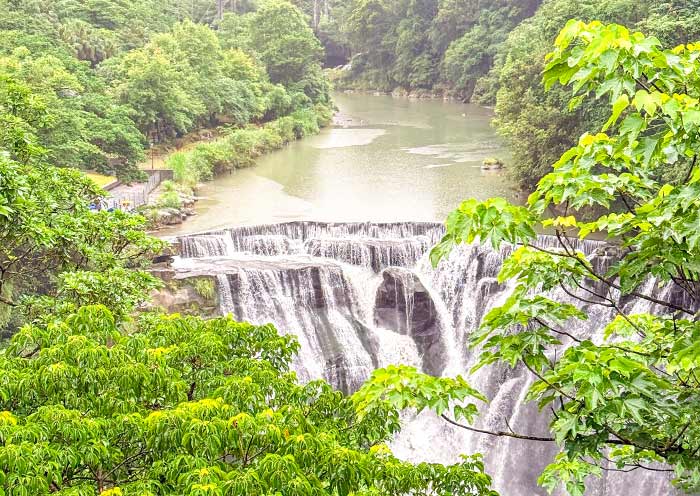
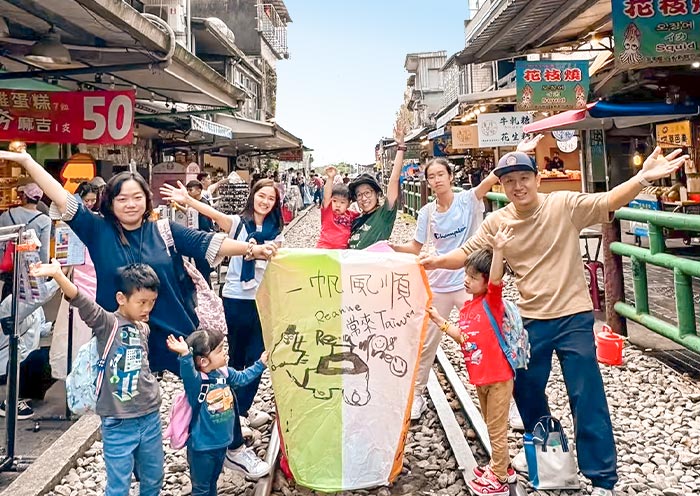
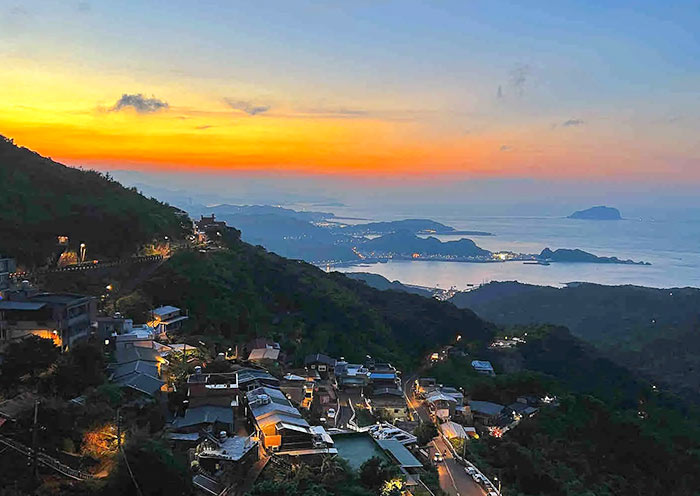
Spend a full day in Sun Moon Lake.
From Taipei, drive 3.2h to Sun Moon Lake (日月潭), Taiwan's largest natural freshwater lake and one of its "Eight Great Sights," as well as a sacred site for Taiwan's Thao indigenous people. At 748 meters elevation, the 116 square-kilometer lake boasts emerald green waters. Lalu Island divides it into two halves: Sun Lake (north, round like the sun) and Moon Lake (south, crescent-shaped like the moon).
Look afar, lake is surrounded by mountains adorned with beautiful trees. Pagodas peek through the foliage, and sunlight dances on water's surface. That’s "jumping sunshine"! You can take a sightseeing yacht counter-clockwise to explore all the highlights (Shuishe Pier → Xuanguang Temple Pier → Ita Thao Pier → Shuishe Pier).
Departing from Shuishe Pier by sightseeing yacht, you'll pass Lalu Island (拉鲁岛), the legendary home of the Thao ancestral spirits, which partially submerged due to an earthquake. Arrive at Xuanguang Pier to disembark and try delicious tea eggs. Follow the trail to Xuanguang Temple (玄光寺) by the lake, then proceed to Xuanzang Temple (玄奘寺) to see the relics of Master Xuanzang, and finally ascend Ci'en Pagoda (慈恩塔) for a panoramic view of Sun Moon Lake. Return to the pier to head to Ita Thao Pier, enjoy local delicacies ashore, and then return to Shuishe Pier.
Then, take a bike around lakeside. This cycling path was named one of the "World's 10 Most Beautiful Cycling Routes" by CNNGo. A full loop takes three hours, but you can choose to ride the scenic 30-minute section from Shuishe Pier to Xiangshan Visitor Center. The scenery along the way is picturesque, with a gentle breeze. If you time it right for sunset, you'll see sun cast a long shadow across lake. Stop for photos or focus on the ride!
After the tour, head to hotel in Sun Moon Lake.
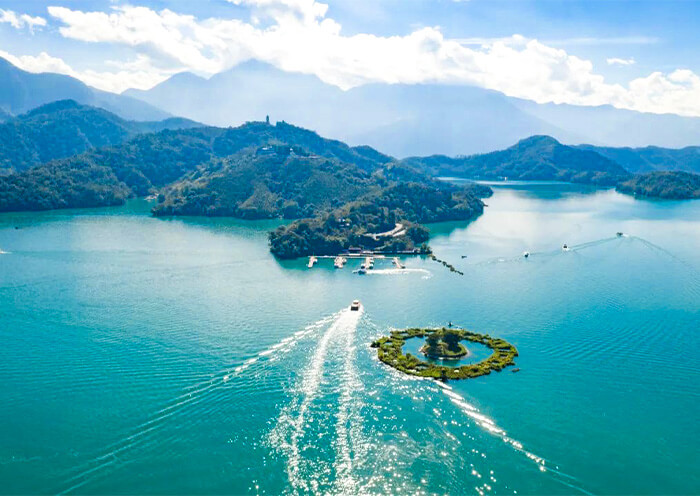
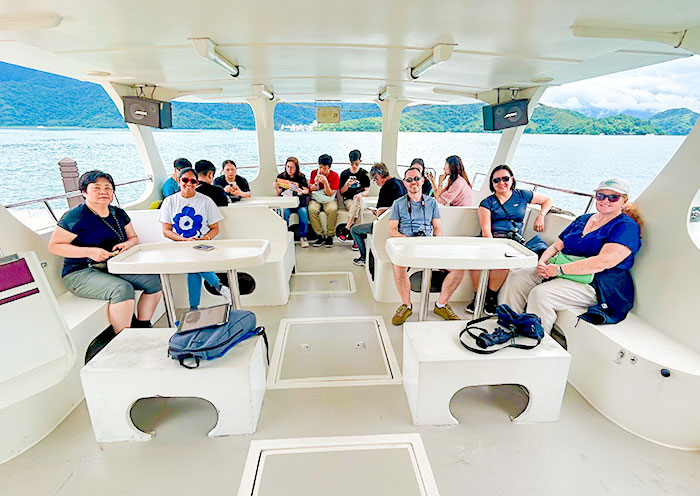

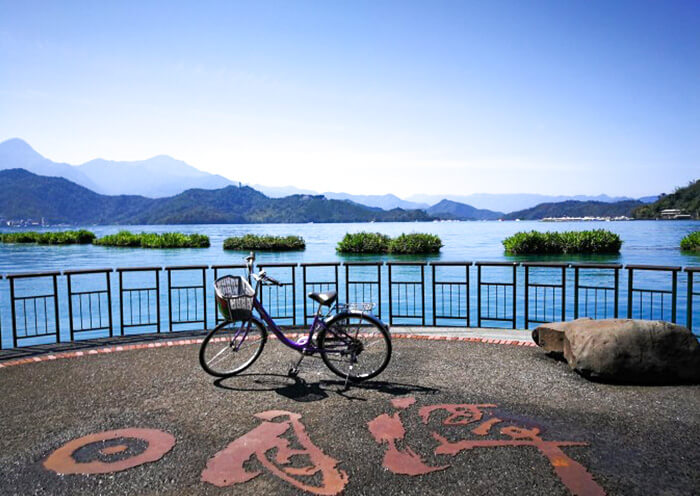
Wake up in Sun Moon Lake’s mist. Then, head to Alishan, sung about by Asian superstar Teresa Teng as having "girls beautiful as water." Alishan stands alongside Sun Moon Lake as a major Taiwanese natural landmark.
You'll visit the core Alishan National Forest Recreation Area (阿里山森林游乐区), over 2,000 meters above sea level. This is Taiwan's most popular forest recreation area, famous for its forest railway, giant trees, evening glow, sunrise, and sea of clouds. The Alishan Forest Railway, one of only three high-mountain railways left globally. You’ll love red trains cut through mist, gliding past trees as they climb the mountain. Take ride and step into forest world! Choose Nature (A) route or Culture (B) route:
A Route (Zhaoping Station, Sisters Ponds, Three Brothers & Four Sisters, Golden Pig Auspice, Forever Love, Magnolia Garden, Shouzhen Temple)
Ride forest train or shuttle to Zhaoping Station. Then walk to Sisters Ponds where two sisters, loving same man but unwilling to harm each other, ended their lives. Then visit Three Brothers & Four Sisters (trees from shared roots), reach Golden Pig Auspice, a pig-typed tree stump shimmering under sun. Pass heart-shaped Forever Love tree to Magnolia Garden, and Shouzhen Temple (Alishan's largest temple dedicated to its guardian deity). Return by shuttle.
B Route (Shouzhen Temple, Three Generations of Wood, Alishan Museum, Xianglin Elementary School, Ciyun Temple, Alishan Sacred Tree Remains)
Take shuttle to start at Shouzhen Temple, visit Three Generations of Wood (three trees stubbornly growing from a single root). Explore Alishan Museum (tree specimens, indigenous culture), pass Xianglin Elementary (Taiwan's highest-altitude school), then reach cultural landmark of Alishan - Ciyun Temple (high Buddhist temple, Japanese Zen style). See Alishan Sacred Tree Remains, including the 2,300-year-old Xianglin Sacred Tree (香林神木). After gazing up at king of forest, take train back to the entrance.
Tips:
- Alishan Forest Railway tickets are populaConsult us to purchase in advance.
- Temperatures are low, even in summer, staying around 15∘C (59∘F). Bring a light down jacket.
- Pack high-calorie snacks like chocolate.
After the tour, drive back to Chiayi for hotel check-in.
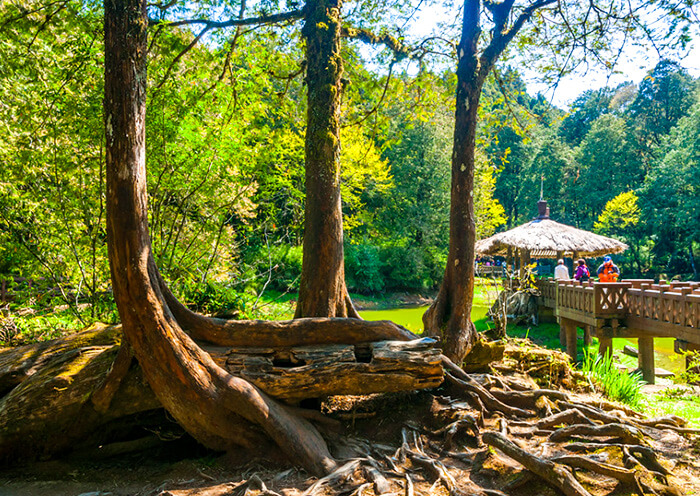
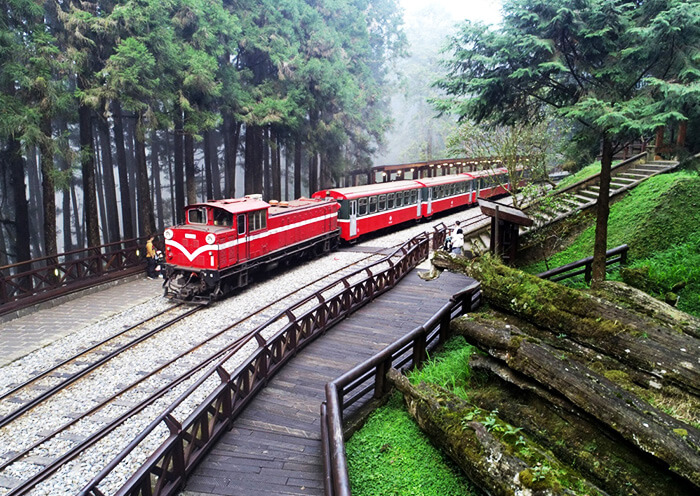
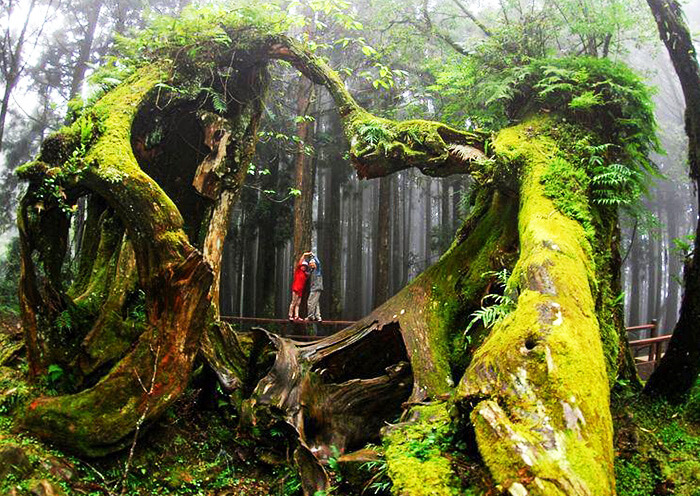

Today, you will depart Chiayi to Kaohsiung (100 km; 1.5 hours’ drive) after visiting Hinoki Village. When reach Kaohsiung, the third largest city & the largest port city in Taiwan, enjoy your time by visiting Fo Guang Shan Buddha Museum and Cijin Old Street (Cijin District).
Chiayi is acclaimed as the "Forestry Capital", with the Alishan Forest Railway (fully opened in 1912) bearing witness to the rise and fall of its forestry industry. When visiting Chiayi, you must explore Hinoki Village (桧意森活村) - Taiwan’s earliest forestry settlement and a Japanese-era (1895–1945) dormitory area known as the "Little Kyoto of Taiwan".
Comprising 29 Japanese-style wooden historic buildings, this complex is Taiwan’s largest cluster of Japanese architecture. Built primarily with Alishan cypress, the structures include single-family houses for senior staff, duplexes for managers and families, four-unit residences for dependents, and row houses for single employees, along with a public bathhouse and guesthouse.
Entering Hinoki Village, the scent of cypress transports you into a century of Alishan forestry history. Here, you can learn about timber heritage, admire traditional craftsmanship, browse artisan shops for souvenirs, enjoy coffee, and sample Japanese sweets. It’s perfect for strolls or taking photos in a kimono!
After that, head to Kaohsiung for Fo Guang Shan Buddha Museum (Closed on Tuesdays). Fo Guang Shan Buddha Museum (佛光山佛陀紀念館) is the largest Buddhist monastery in Taiwan, and its Big Buddha of Fo Guang is a famous landmark in Kaohsiung. The museum was founded in 1967 by Master Hsing Yun (星云大师; 1927-2023) and his disciples. Master Hsing Yun is the founding abbot of Fo Guang Shan, the 48th generation heir of the Linji Chan School, who was ordained at Qixia Temple in Nanjing and later propagated Buddhism in Taiwan at the age of 23. He introduced and advocated the "Three Acts of Goodness三好运动" in 1998 (Have Good Intentions, Do Good Deeds, Speak Good Words存好心、做好事、说好话), which gained widespread popularity in schools and society.
You can explore the Path to Buddhahood (成佛大道), a 1.5-kilometer path lined with Bodhi trees symbolizing enlightenment and wisdom. Along the way, you can visit highlights such as the Eight Pagodas, the Pavilion for Ten Thousand People, the main museum, and the Big Buddha of Fo Guang. To reach the Pavilion for Ten Thousand People (万人照相台), you need to climb 37 steps, symbolizing the Thirty-Seven Practices leading to enlightenment. From the Pavilion for Ten Thousand People, you can take a photo with the Big Buddha by facing east and with the Eight Pagodas (八塔) by facing west. The Main Museum (本馆; only available on weekends) is one of the key structures of the Buddha Museum, which enshrines the true relics of Buddha. Finally, you will have a close-up view of the Giant Buddha of Fo Guang (佛光大佛), made of over 1,800 tons of bronze and iron, standing approximately 108 meters tall, making it one of the tallest outdoor seated Buddhas in the world.
Approximately 20% of the population in Taiwan are Buddhist believers, and the Fo Guang Shan Buddha Museum is a popular destination for locals to pray, meditate, and contemplate life's philosophy. The museum hosts an annual Lantern Festival during the Chinese New Year, featuring blessing lantern displays, floral parades, markets, and other activities. Additionally, the vegetarian meals here are also quite popular.
Finally, transfer to Kaohsiung’s Cijin Old Street (50 km, 1hour drive) by Taiwan's only Undersea Tunnel - Kaohsiung Cross-Harbor Tunnel (高雄过港隧道; 1,670 m).
Cijin Old Street is located on Cijin Peninsula, the earliest port in Kaohsiung, which was once primarily centered around fishing. Later, due to the construction of Kaohsiung Port, Cijin became an outlying island. As a must-visit tourist spot in Kaohsiung, Cijin Old Street, adjacent to the Cijin Ferry Terminal, is renowned for its fresh seafood and traditional snacks. Here, you can savor grilled squid, swordfish fried cakes, pork soup, oyster omelets, peanut coriander ice cream rolls, sweet potato cakes, pig blood cake, 50 Lan milk tea, and more. The street is lined with traditional old shops and unique vendors, exuding a nostalgic atmosphere.
Near Cijin Old Street, you can find Cijin Mazu Temple (Kaohsiung's first Mazu temple; Since 1673) for Mazu culture and Minnan architecture, or stroll on Cijin Beach for its black sands and sea view, perfect for experiencing the fishing village charm and harbor allure of the port of Kaohsiung!
After the food tour in Cijin Old Street, go back to your hotel in Kaohsiung.
Free Time Ideas:
- Love River Night Boat(The Love Boat; Self-pay): Enjoy a romantic boat trip on the Love River, the mother river of Kaohsiung, for the landmarks of Kaohsiung, such as Kaohsiung Music Center (junction between Love River & Kaohsiung Port) & Great Harbor Bridge (longest cross-port rotating bridge in Asia; next to the Pier-2 Art Center).
- Taiwan Food Tour in Kaohsiung Night Markets: ExploreRuifeng Night Market or Liuhe Night Market for local food.
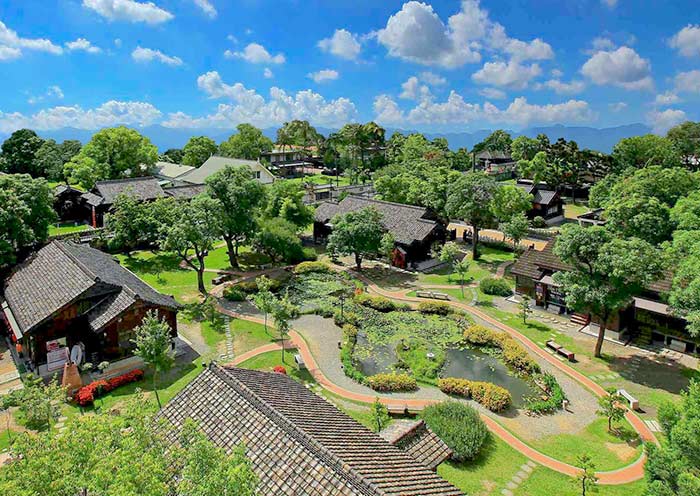

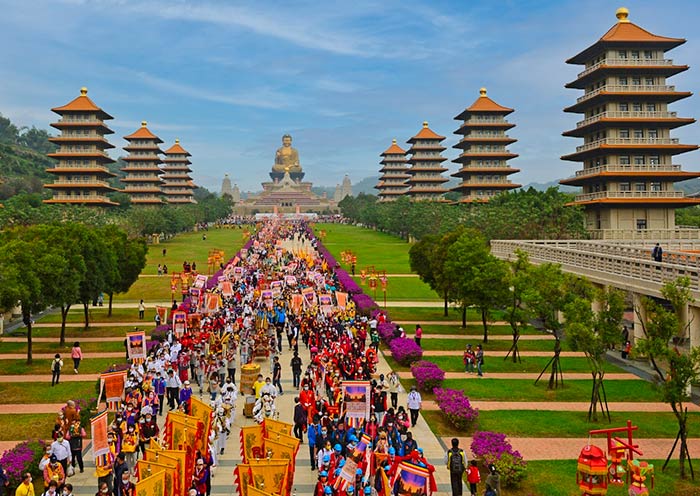
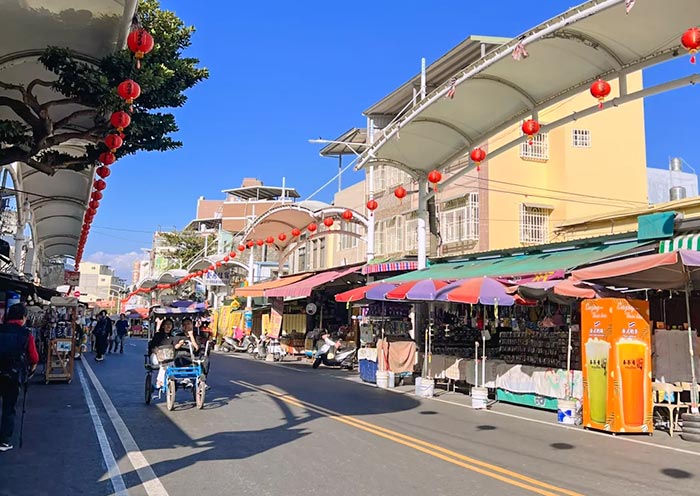
This morning, pay a visit to Lotus Lake and Pier-2 Art Center. Then, uncover Sizihwan’s British Consulate at Takao in the afternoon.
In the morning, head to Lotus Lake (Lianchitan), one of the must-visit spots in Kaohsiung. Every summer, lotus flowers bloom, filling the air with a delightful fragrance, hence the name Lotus Pond. It is not only a great place to admire lotus flowers but also a destination for experiencing Eastern religious culture due to its pavilions, giant statues, and surrounding city walls. When you visit Lotus Lake, you cannot miss the iconic "Dragon and Tiger Pagodas" by its shores. This pagoda was recommended by CNN, making it one of Kaohsiung's most traditional religious scenic areas.
Built in 1976, the Dragon and Tiger Pagodas stand at seven stories tall and are connected to the Nine-Turn Bridge, reflecting on the lake's surface to create a picturesque scene. It's said that there's a tradition when visiting the Dragon and Tiger Pagodas – you should enter through the dragon's mouth and exit through the tiger's mouth, which brings good luck and wards off evil. The pagoda's interior walls are adorned with exquisite ceramic artwork depicting moral stories, crafted by renowned artists. Additionally, along the shores of Lotus Lake, there are many temples and attractions like the Spring and Autumn Pavilion and the Beiji Xuantian Shangdi Temple. It is a popular spot for locals to stroll, cycle, and relax by the lake.
After that, pay a visit to the Pier-2 Art Center, a must-visit "urban memory container" in Kaohsiung. Located at the junction where Love River meets Kaohsiung Harbor, adjacent to the city landmark Great Harbor Bridge, its predecessor was the Kaohsiung Harbor warehouses built in 1973, which once stored fish meal and sugar. With industrial transformation, the old warehouses fell silent and idle until 2000, when, by chance of a fireworks display, they were transformed into a paradise for artists.
Named "Pier-2" for its location at Kaohsiung Harbor's second pier, the district is now divided into three major warehouse groups: Dayong, Penglai, and Dayi. It integrates exhibitions, music, design, and railway culture, interconnected by a waterside light rail, creating a vibrant artistic space.
Take your time to explore giant Transformers, sculptures symbolizing industry and fishing, oversized suitcases, and container blocks. Railway enthusiasts can also encounter surprises: trains occasionally pass on the tracks, the Hamaxing Pier-2 Miniature Train, Taiwan Railway Museum, Banana Train (Kaohsiung produces bananas), and other distinctive experiences allow you to relive the transport memories of the port. If you visit on weekends, the handcrafted jewelry and design brand booths at the cultural and creative market will allow you to bring back this unique local culture.
Then, head to British Consulate at Takao, the first consulate that the UK established in Taiwan. It has a history of nearly 150 years. Comprising the Upper Residence, Lower Office, and the Hillside Path, it stands as one of Taiwan's oldest Western-style buildings. Situated by Takao Hill, overlooking the main shipping channel of Kaohsiung Harbor, it offers views of the sunset at Sizihwan to the right and a panoramic view of Kaohsiung Harbor to the left (including Cijin Lighthouse and the 85 Sky Tower).
Imagine life in 1879 for the British consul: collecting local maritime taxes at the Lower Office, residing in the Upper Residence to host diplomatic guests, and enjoying traditional English afternoon tea in the beautiful rose garden every afternoon.
Approaching the Lower Office of the consulate, you are greeted by a vivid depiction of the early harbor scene. Following the staircase path, you can enjoy the seascape of Sizihwan and catch a glimpse of the playground at Sun Yat-sen University. Along the route, you will encounter a wax figure of Robert Swinhoe (1836-1877). Swinhoe, the first British vice consul in Taiwan, was not only a diplomat but also a biologist. His contributions include the recognition of the Formosan rock macaque as an endemic species of Taiwan. (Be wary of monkeys)
The Upper Residence at the hilltop showcases a Baroque-style architecture from the Renaissance era, with red brick arcades, wooden shutters, and a stunning harbor view, making it a popular spot for visitors. Nearby stands the Eighteen Lords Temple, built in the Minnan architectural style, featuring exquisite rooftop sculptures worth seeing. Additionally, you can indulge in a refined English afternoon tea experience in the classical rose garden (self-pay).
At last, hike to the Sizihwan Viewing Platform (Optional; Self-pay for Overtime Fee) to listen to the sound of the waves, feel the sea breeze, and await the sunset. Sizihwan is a bay known for its beautiful sunset views and natural reefs. The Sizihwan Sunset is one of the eight scenic wonders of Kaohsiung; in 1980, the only seaside university in Taiwan, "National Sun Yat-sen University," was established here, adding a touch of cultural charm to Sizihwan. As night falls, with fishing boat lights twinkling amid the glow of the sunset, the sea is adorned with a picturesque blend of sea and sky, making it a favorite spot for locals to go on dates.

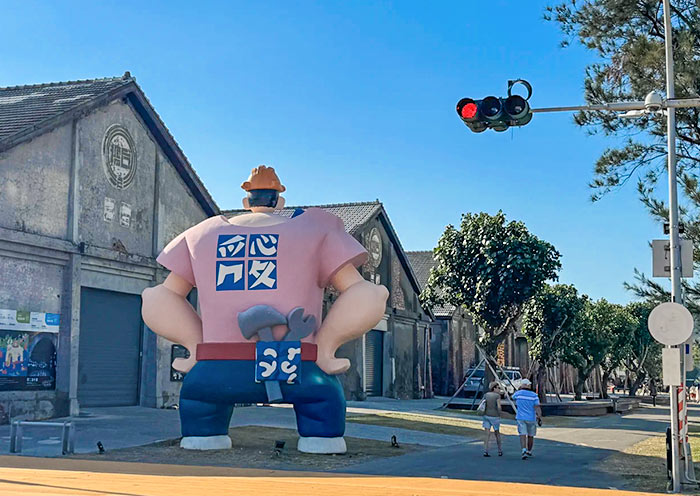
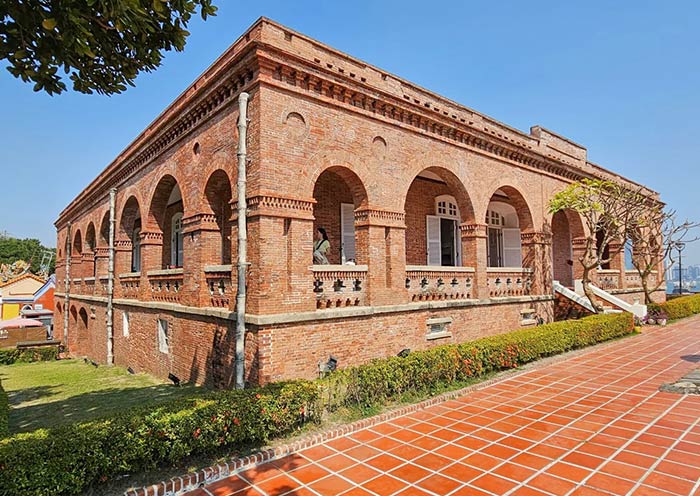
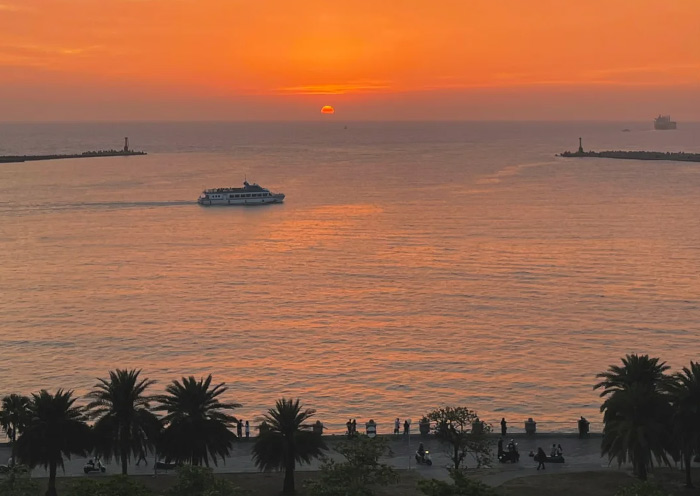
Your 14 Days Japan Taiwan Tour ends in Kaohsiung. We’ll take you to Airport in Kaohsiung for your departure.
Extend Your Travel to China Mainland: Take a flight to Beijing Forbidden City & Great Wall (3.5h), Shanghai The Bund (2h), Chengdu Panda (3.5h).
We, Asia Odyssey Travel, are so glad to accompany you for 14 Days Japan Taiwan Tour, and are always prepared to design your destination in China and Asia. See you again!
What’s Included & What’s Excluded
What's Included:
What's Excluded:
Important Travel Tips for Visiting Japan
Get the right visa. Depending on your nationality and the length of your stay, you may need to apply for a visa in advance. You can do this online or at a Japanese embassy or consulate. Many countries are part of Japan’s visa exemption program, allowing their citizens to enter Japan for short stays without a visa for tourism. Always check if your country is on this list before applying for a visa. If you have any questions, feel free to contact our travel experts for more information.
The best time to visit Japan depends on your interests:
Spring (March to May): Ideal
for witnessing the cherry blossoms and enjoying mild weather. Major cities like Tokyo, Kyoto, and Hiroshima
are particularly beautiful as cherry trees bloom spectacularly.
Summer (June to
August): Perfect for experiencing vibrant festivals such as Gion Matsuri in Kyoto,
Tanabata Matsuri across the country, and enjoying the natural beauty of Hokkaido, which is less humid than
the rest of Japan. Note that early summer (June) is the rainy season.
Autumn (September to
November): Offers stunning fall foliage, making it a great time for hiking and temple
visits. The weather is cool and pleasant, ideal for outdoor activities.
Winter (December to
February): The best time for winter sports, especially in regions like Hokkaido and the
Japanese Alps. Onsens (hot springs) are also a popular attraction during the cold months.
Bring Cash. Despite advances in digital payment, many smaller vendors, temples, and rural
areas operate predominantly with cash. It’s wise to keep some yen on hand at all
times.
Universal Travel Adapter. Japan uses 100V with two straight thin
pins.
Passport: Ensure it’s valid for at least six months beyond your date
of travel.
Visa (if required): Make sure you have the right visa for your
travel.
Travel Insurance Information: Always good to have on hand.
Bow when greeting: A slight bow is a common way to say hello, thank you, or
sorry.
Be mindful of your noise level: Japanese culture values quietness,
especially in public transportation and residential areas.
Follow the rules: Whether
it's waiting in line or adhering to signage, following local rules and etiquette is highly
valued.
Etiquette in temples and shrines: Wear modest clothing and follow specific
customs such as washing hands and mouth before entering a shrine or temple. Photography might be restricted
in sacred areas.
Looking for more travel guides for first-time visitors to Japan? Want to gather additional information to plan your trip? Our team of professional travel experts has written over 40 articles about Vietnam. Please check out ourJapan Travel Guide for inspiration and detailed insights.
Hotel Conditions for Your Japan Tour
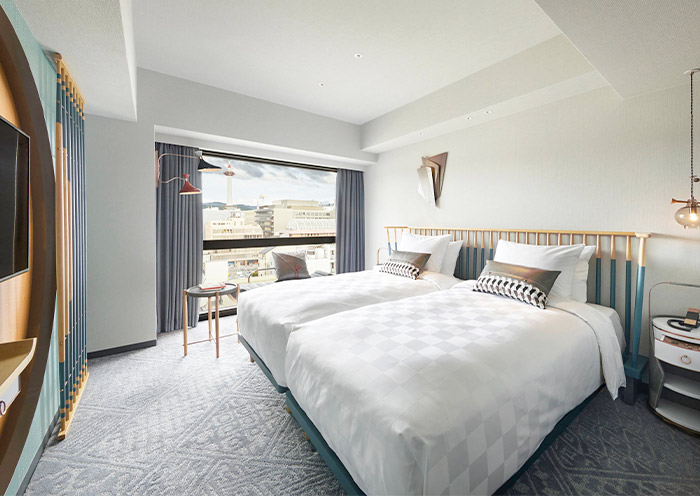

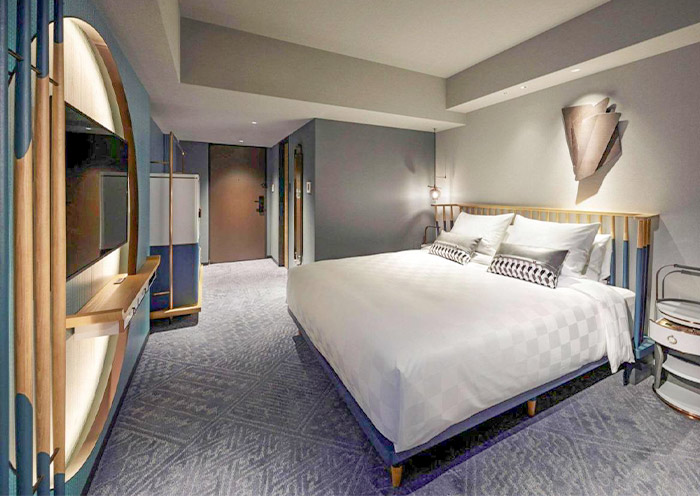
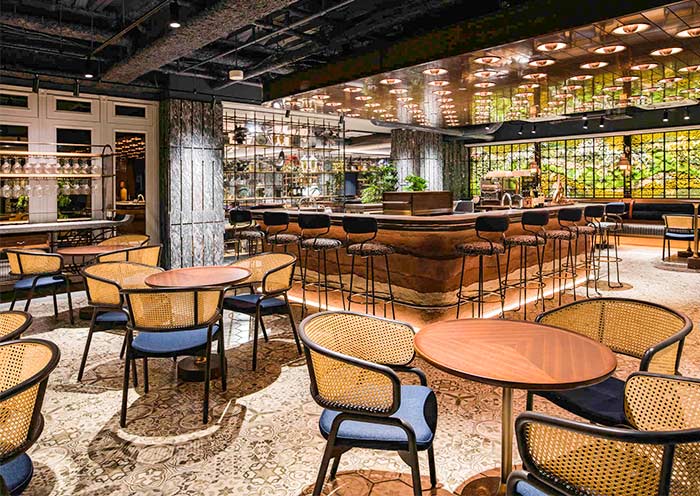
We offer a range of accommodation options to suit various preferences and budgets: luxurious 5-star hotels, comfortable 4-star hotels, and economical 3-star hotels. Our selected hotels are conveniently located close to the city center or popular tourist spots.
For those seeking a more distinctive lodging experience, we also offer Traditional Ryokans, Machiya, Onsen (hot springs) Hotels, etc. If you have specific needs or preferences, please consult with your travel advisor.
Tips: Be aware that hotel room sizes in Japan may be smaller compared to those in other developed countries due to the scarcity of land. If your budget allows, it is recommended to opt for a higher category of hotel, which will generally offer more comfort.
Photo Gallery for This Itinerary
Latest Japan Tours Reviews from Our Customers

Jess
Malaysia
Destination(s): Beijing, Xian, Shanghai, Zhangjiajie
Date of Experience: Sep 04, 2025
Tour Customized by: Yee
You May be Interested in This Tour: 26 Days In-Depth Vietnam China Japan Tour: Ultimate Asia Contrast

Claudia Konrado
Brazil
That’s when a friend recommended Asia Odyssey Travel (AOT), and it was the best decision we made! Not only did they completely customize our entire trip, but they did so at a perfectly reasonable cost. Our travel agent, Abby, was absolutely incredible. She worked tirelessly with us to build out an itinerary, patiently answering all our questions, offering guidance, making changes, and adding new ideas with such care and professionalism. From Disney and Universal for the teens to visits to TeamLab Planets, museums and temples and shopping excursions, ending with a relaxing beach time in Okinawa, Abby worked with us and ensured there was something wonderful for everyone. Even during the trip, she was always available to help and provide support. I truly can’t express how much Abby made a difference in our experience. The entire team at AOT, from the guides to the drivers, was consistently helpful and attentive, ensuring every moment of our journey was smooth and enjoyable. We are so grateful for the wonderful memories created, all thanks to the dedication and expertise of AOT team. We highly recommend them for an exceptional travel experience.
Date of Experience: Jul 01, 2025
Tour Customized by: Abby
You May be Interested in This Tour: Customized Tour

Cheers
Britain
I’m so glad we chose to do this tour! We were looking for a way to escape the summer heat, and Hokkaido was a dream come true. The air was so fresh and the scenery was just incredible—I swear my photos don’t even do it justice.
The highlight for me was definitely the lavender fields in Furano. They were even more beautiful in person than in all the pictures you see online. Our private guide knew the best spots to get a great view without fighting the crowds. Plus, we got to see all the other rainbow flower fields in Biei which were just as amazing.
The trip was super relaxing because we didn't have to worry about a thing. Our driver was so professional, and it was a huge relief to have a private car just for our family. It made getting between all the different towns so easy. We loved exploring the charming canal in Otaru and getting to eat all the fresh seafood in Sapporo. The food in Hokkaido is seriously on another level!
Date of Experience: Jun 10, 2025
Tour Customized by: Cheers
You May be Interested in This Tour: 8 Days Hokkaido Summer Tour: Colorful Family Vacation on Hokkaido Island
Price: From USD request pp
(Based on a private tour for 6 persons staying in 4-star hotels. Prices may vary depending on the itinerary, travel dates, and group size. )
(Book at least 6 months in advance)
